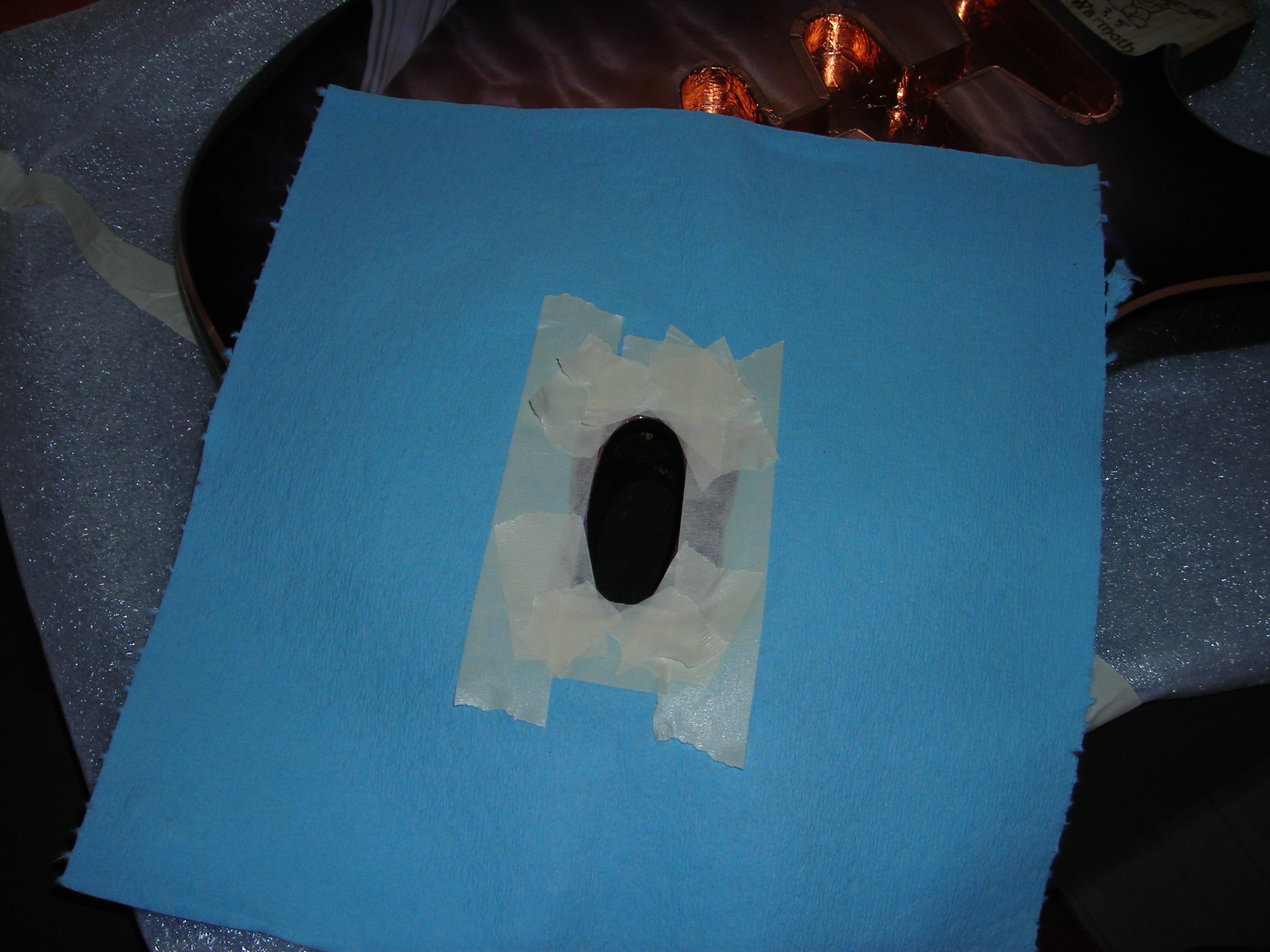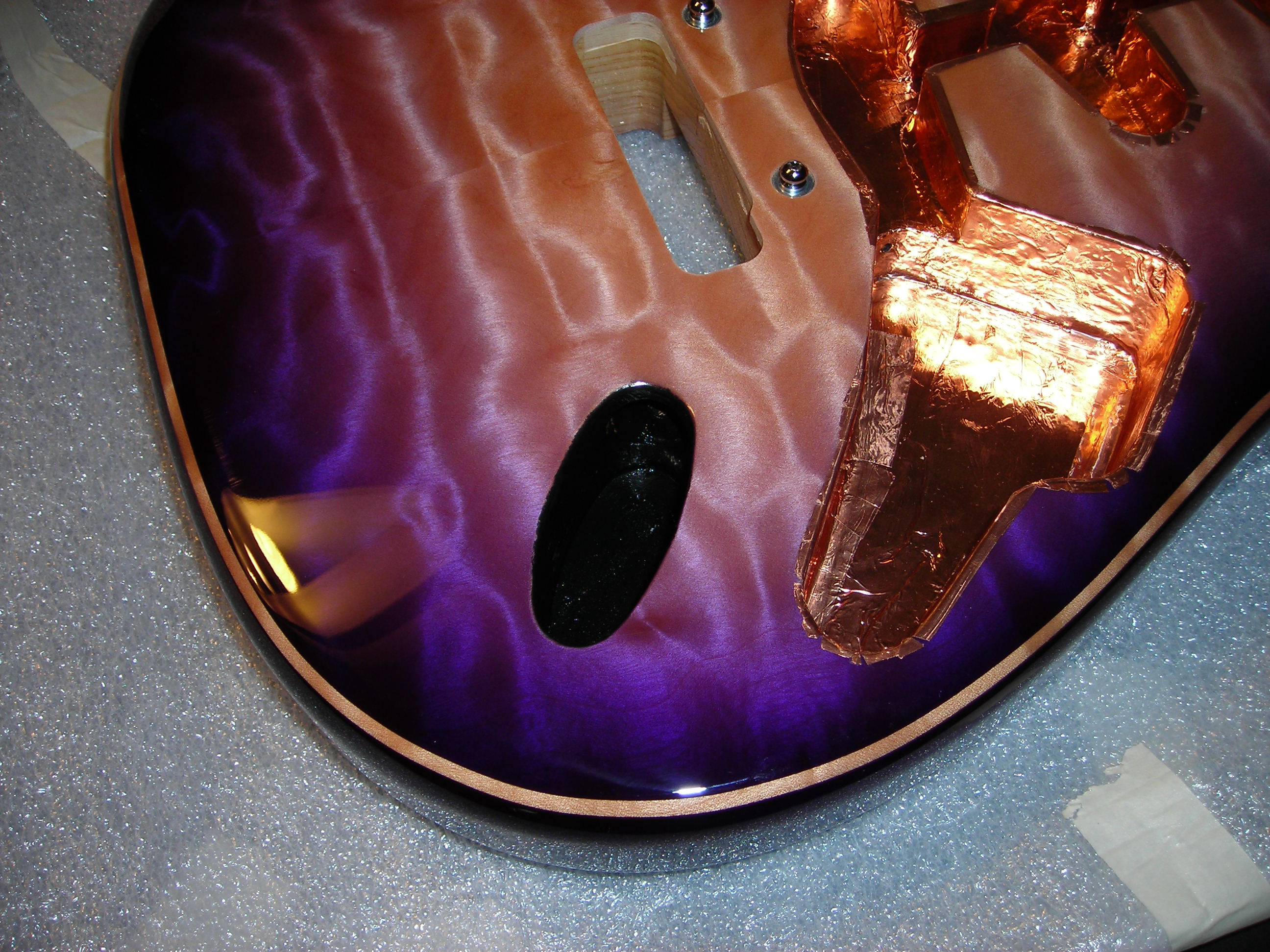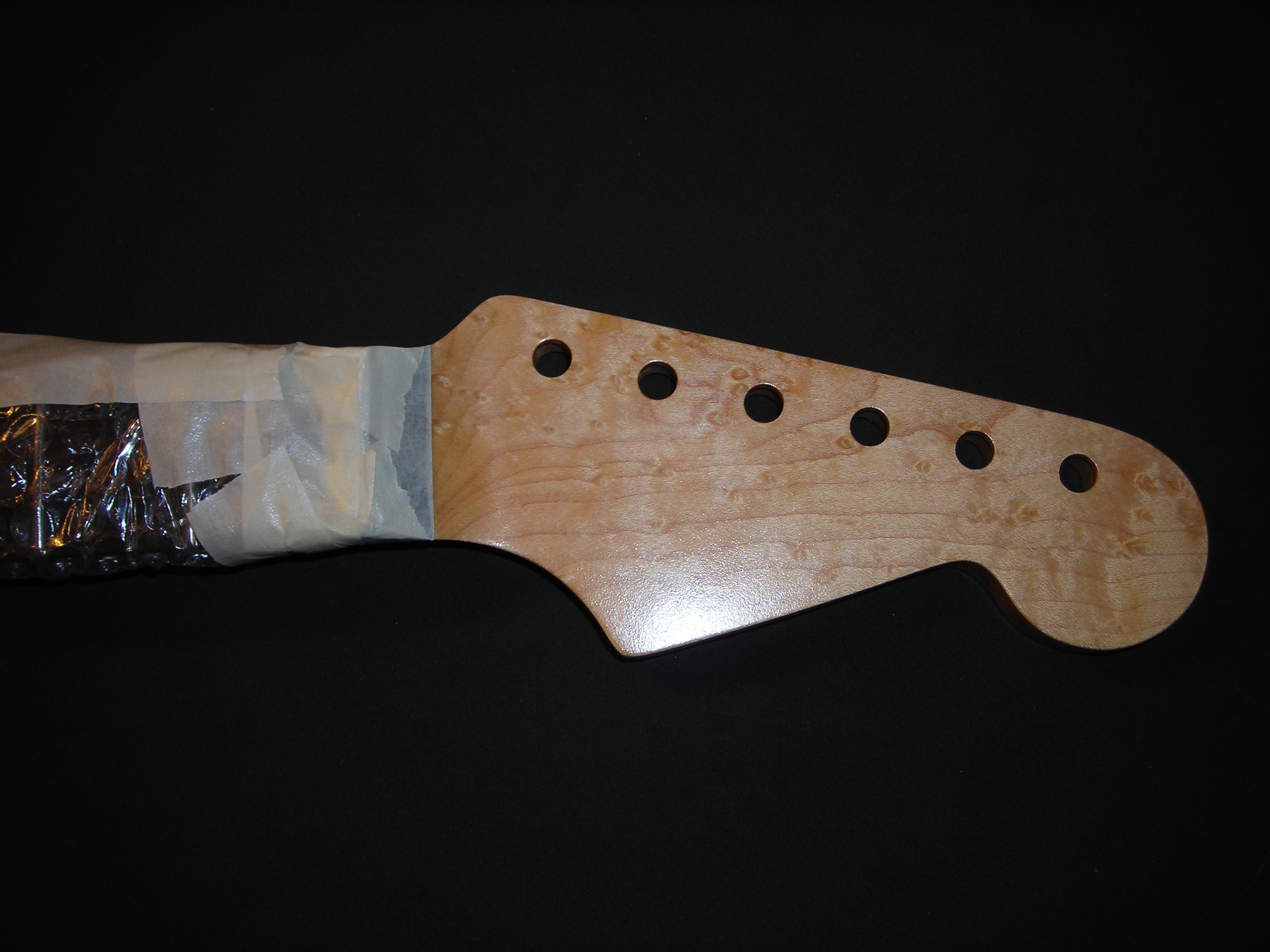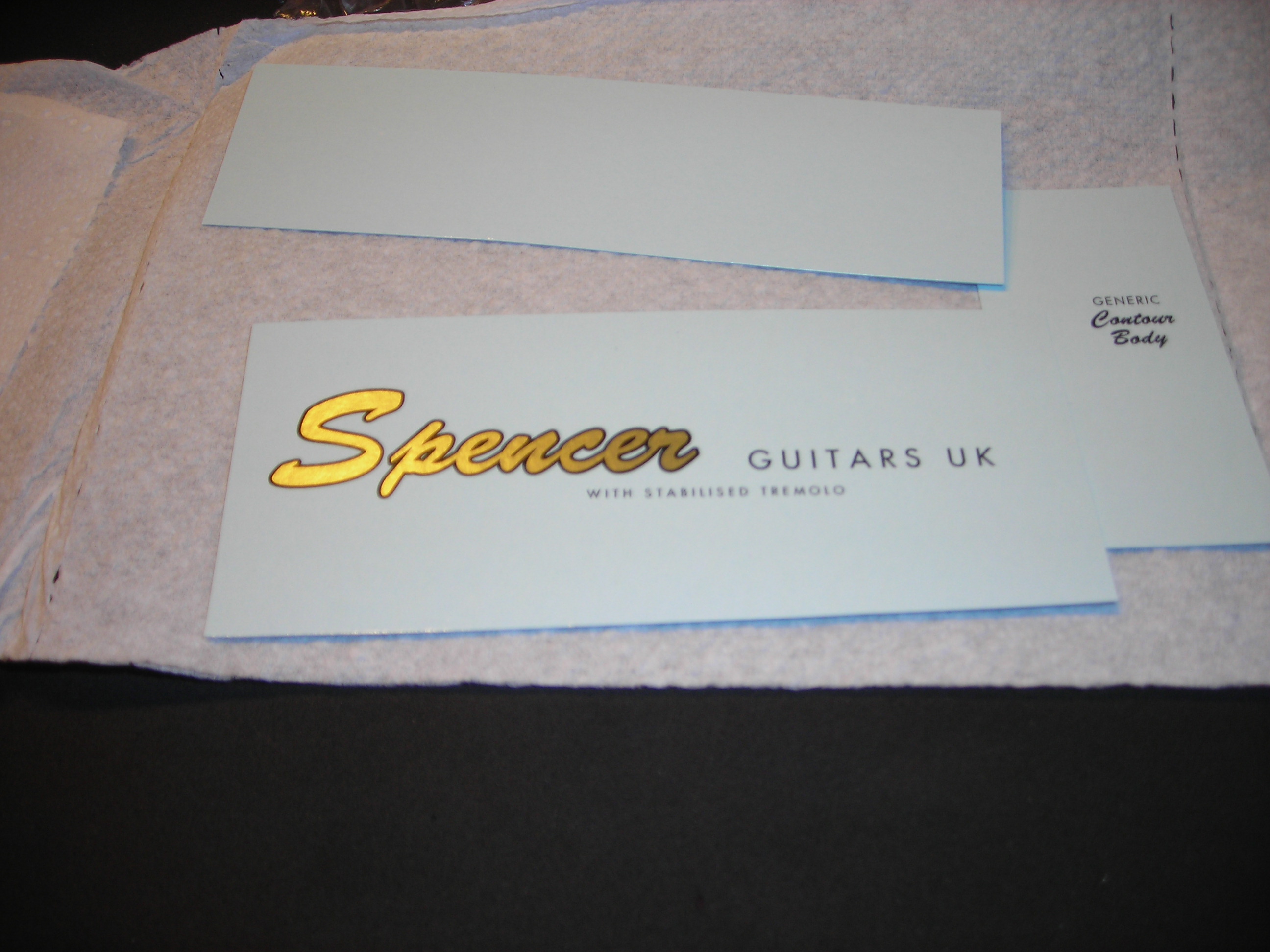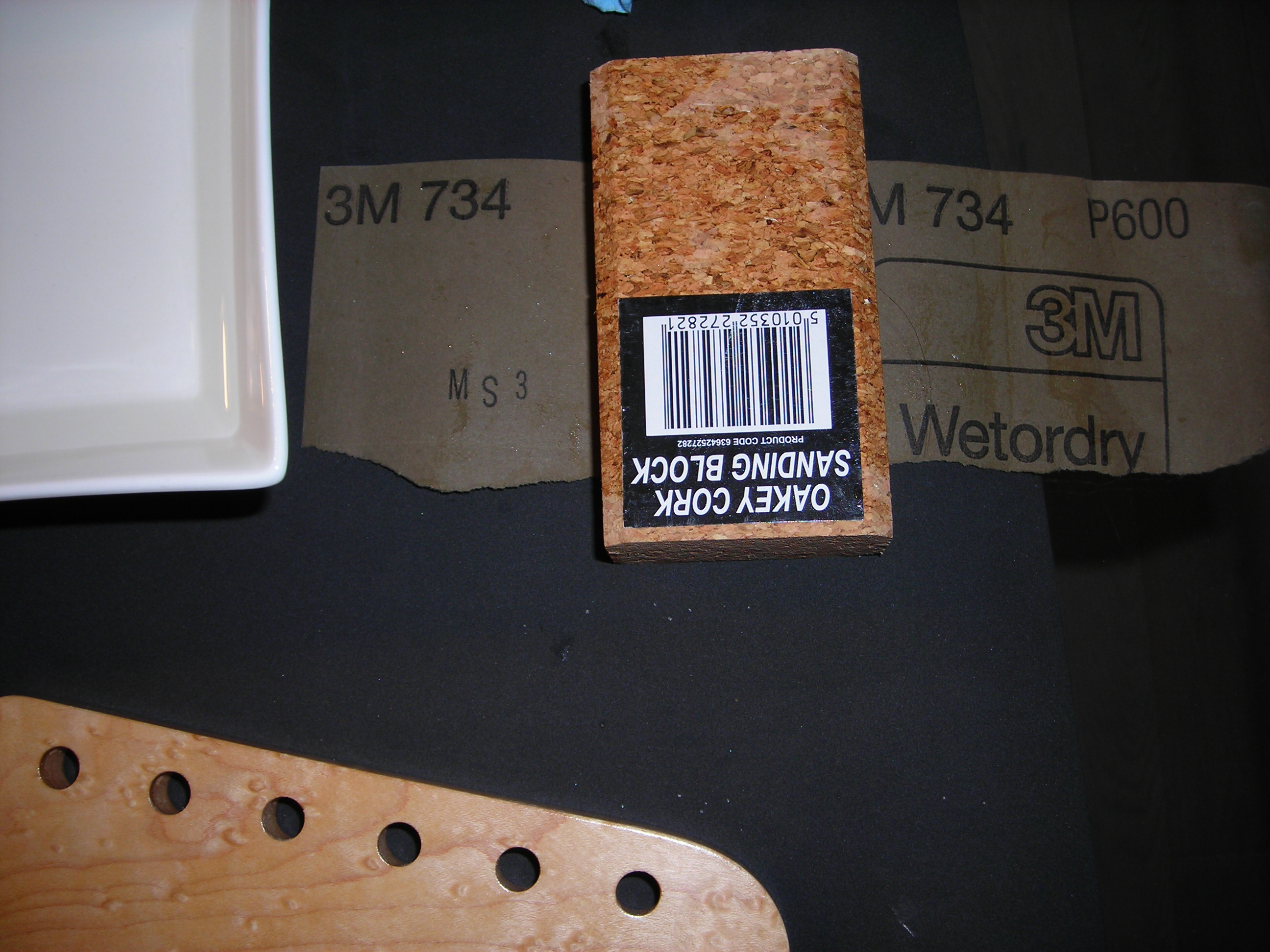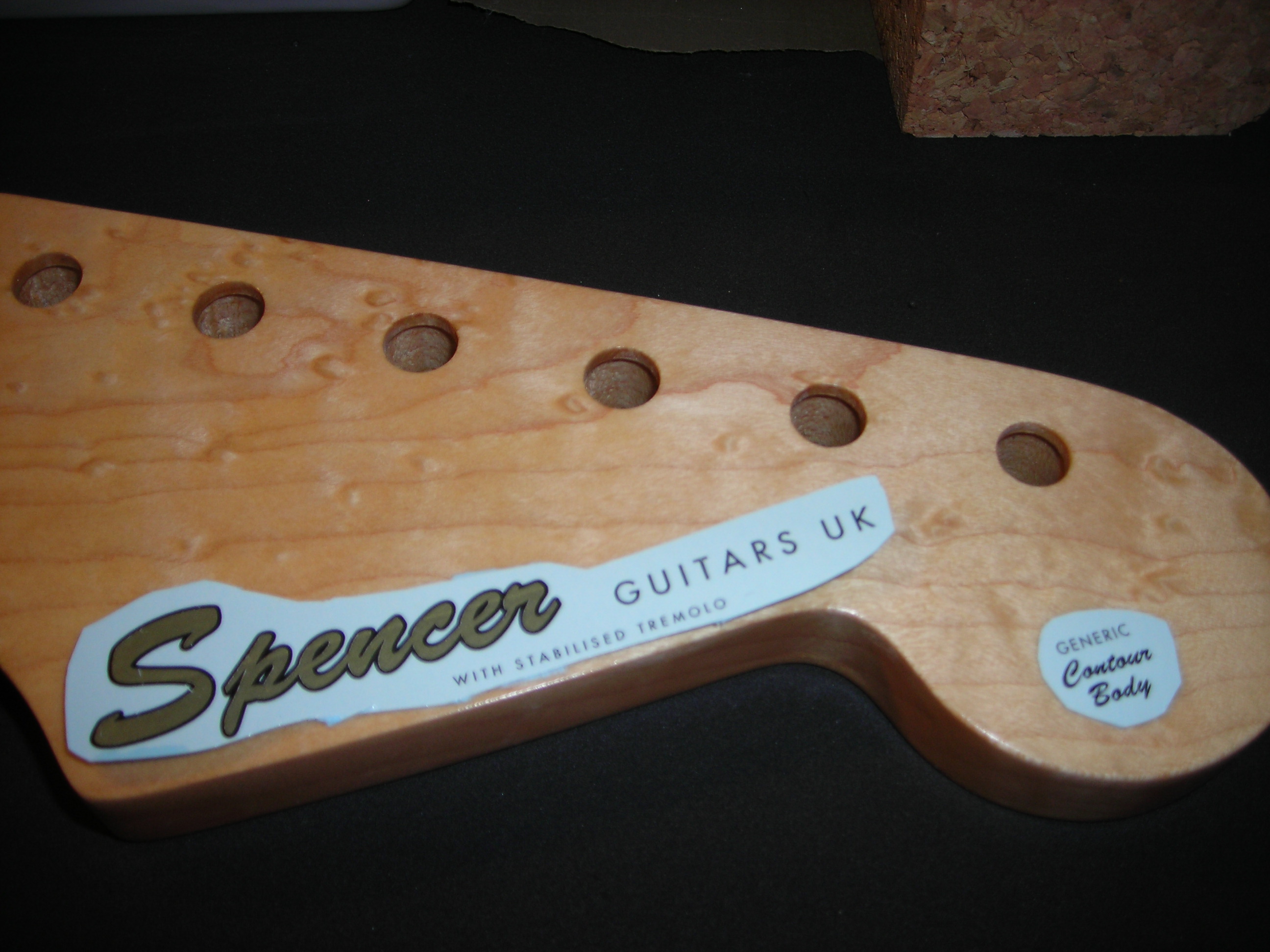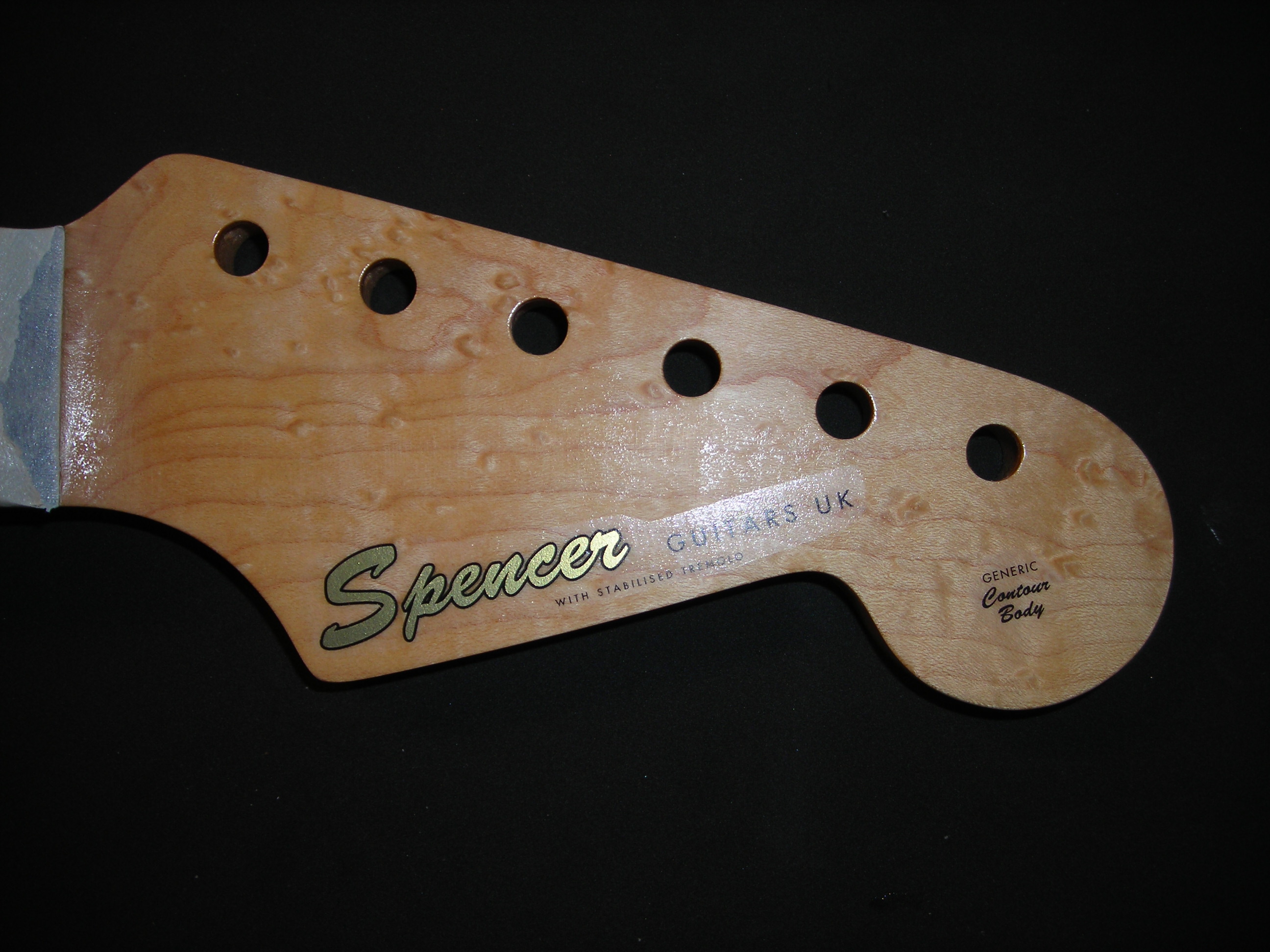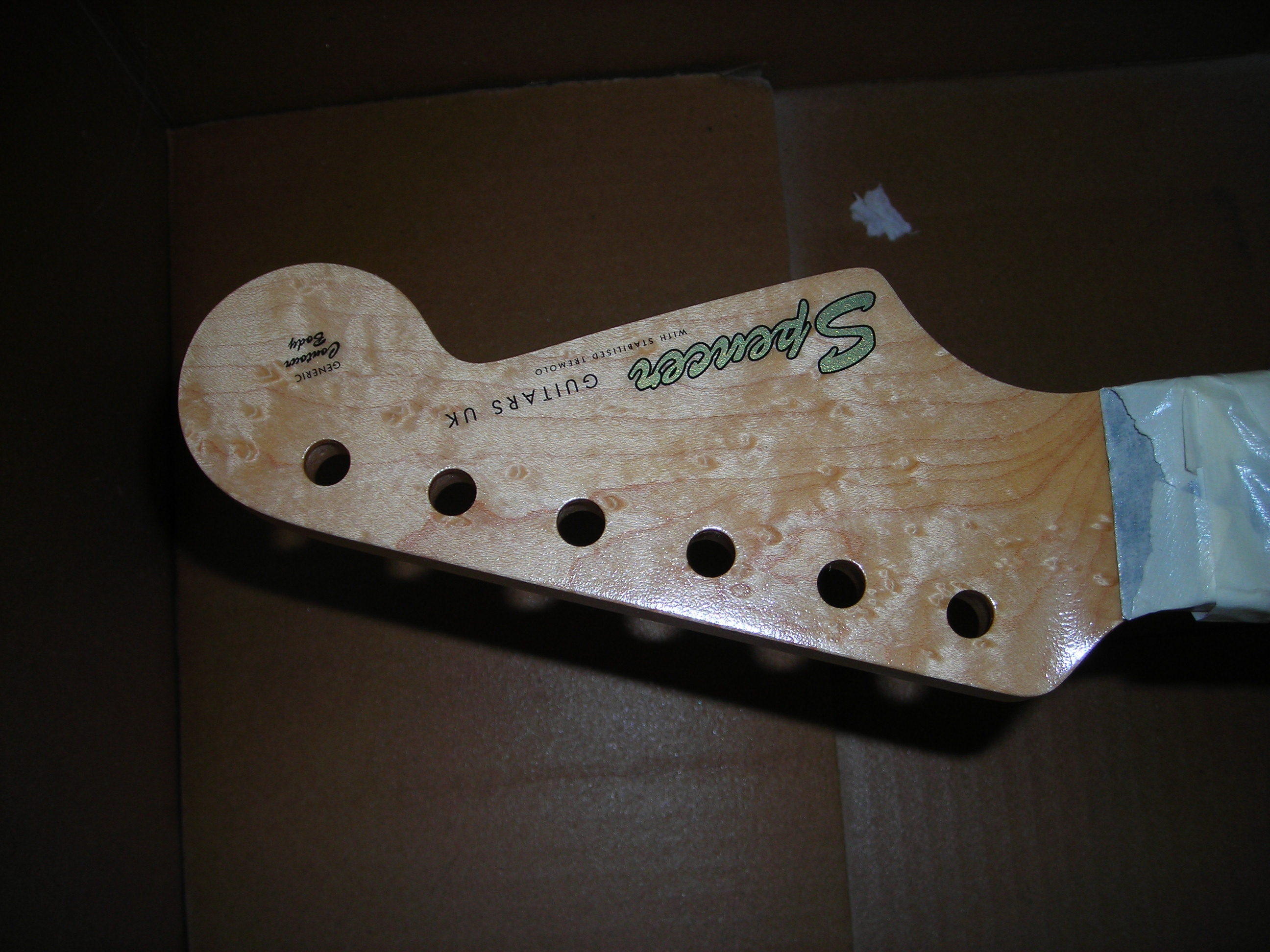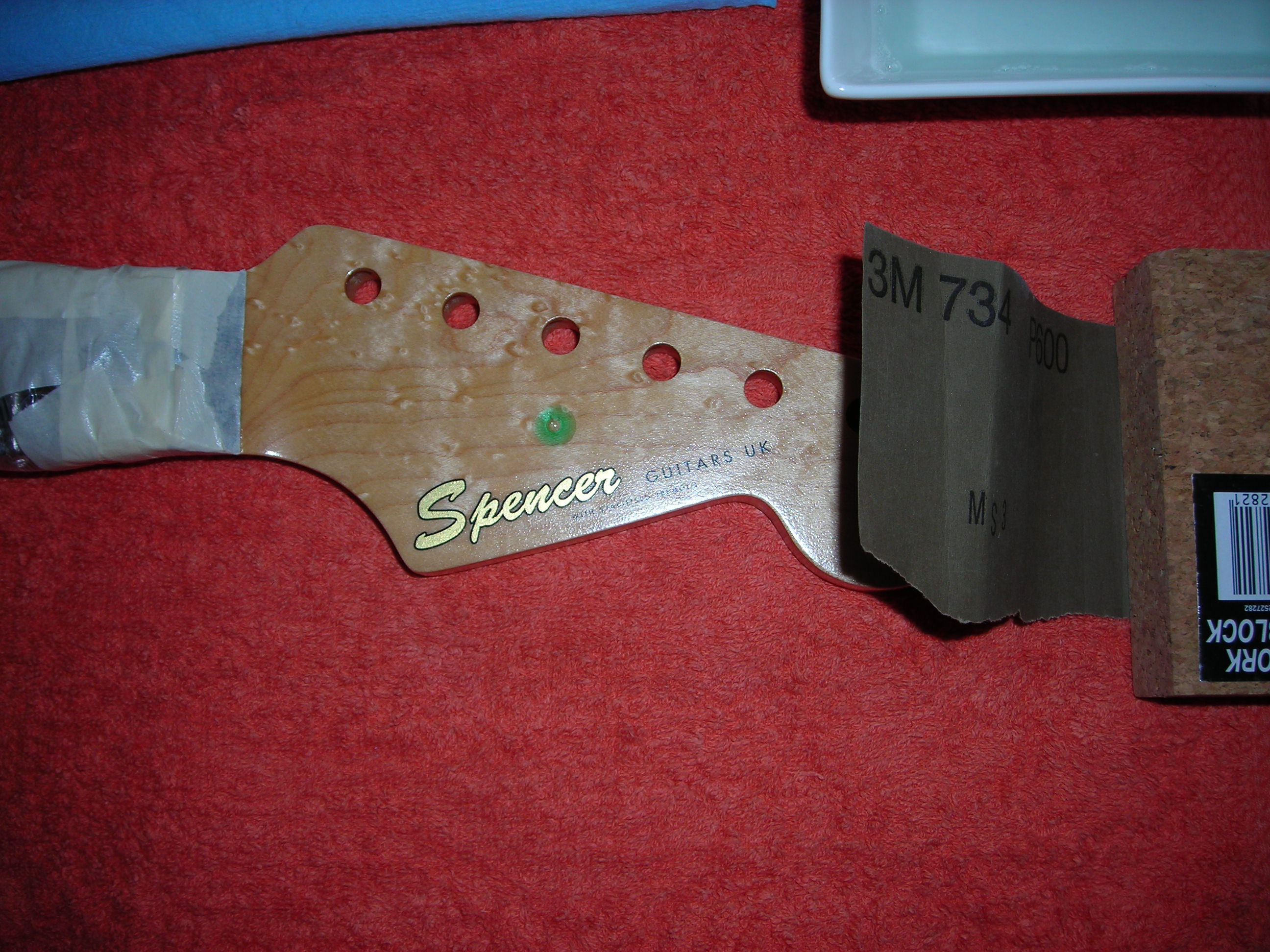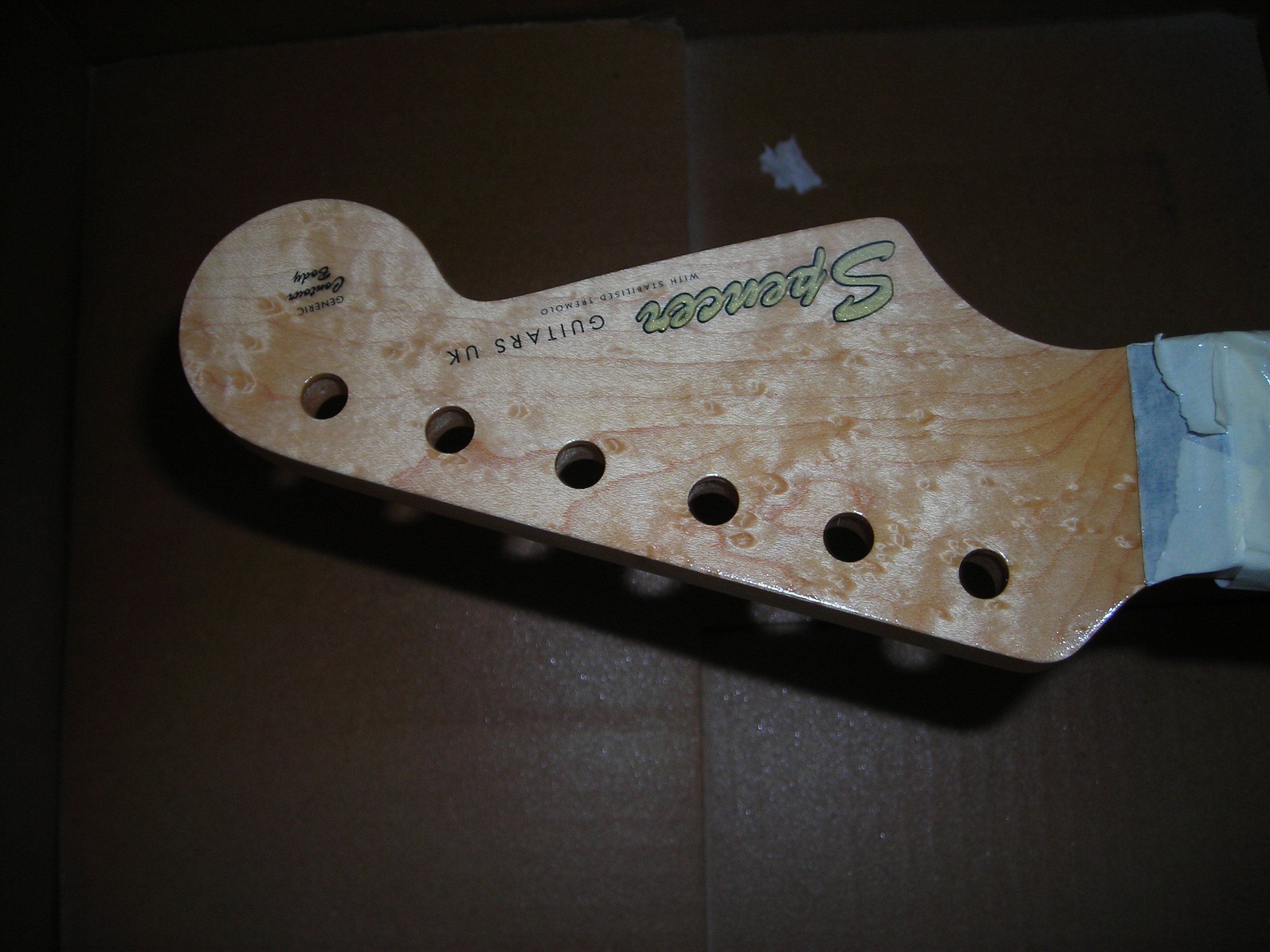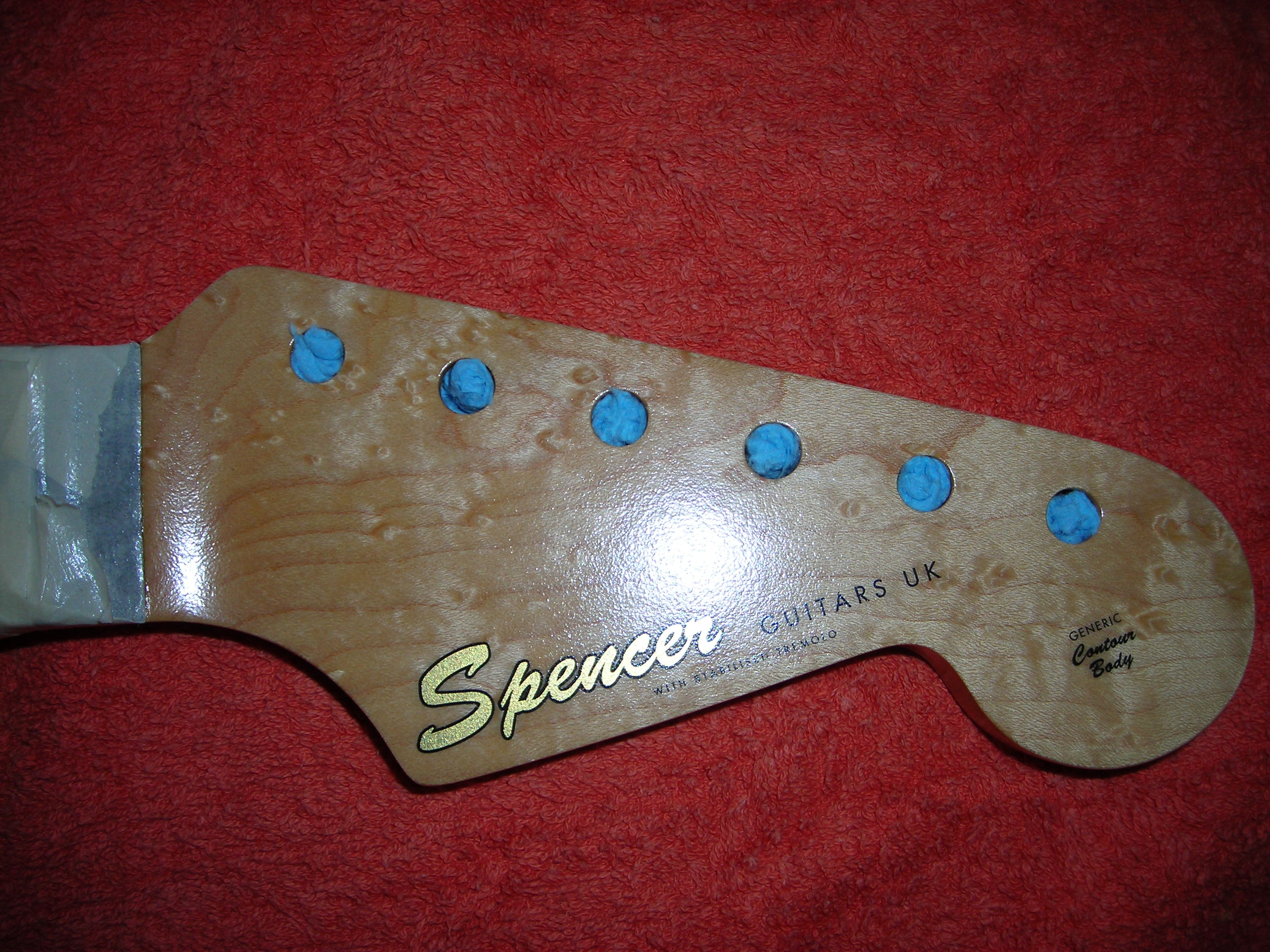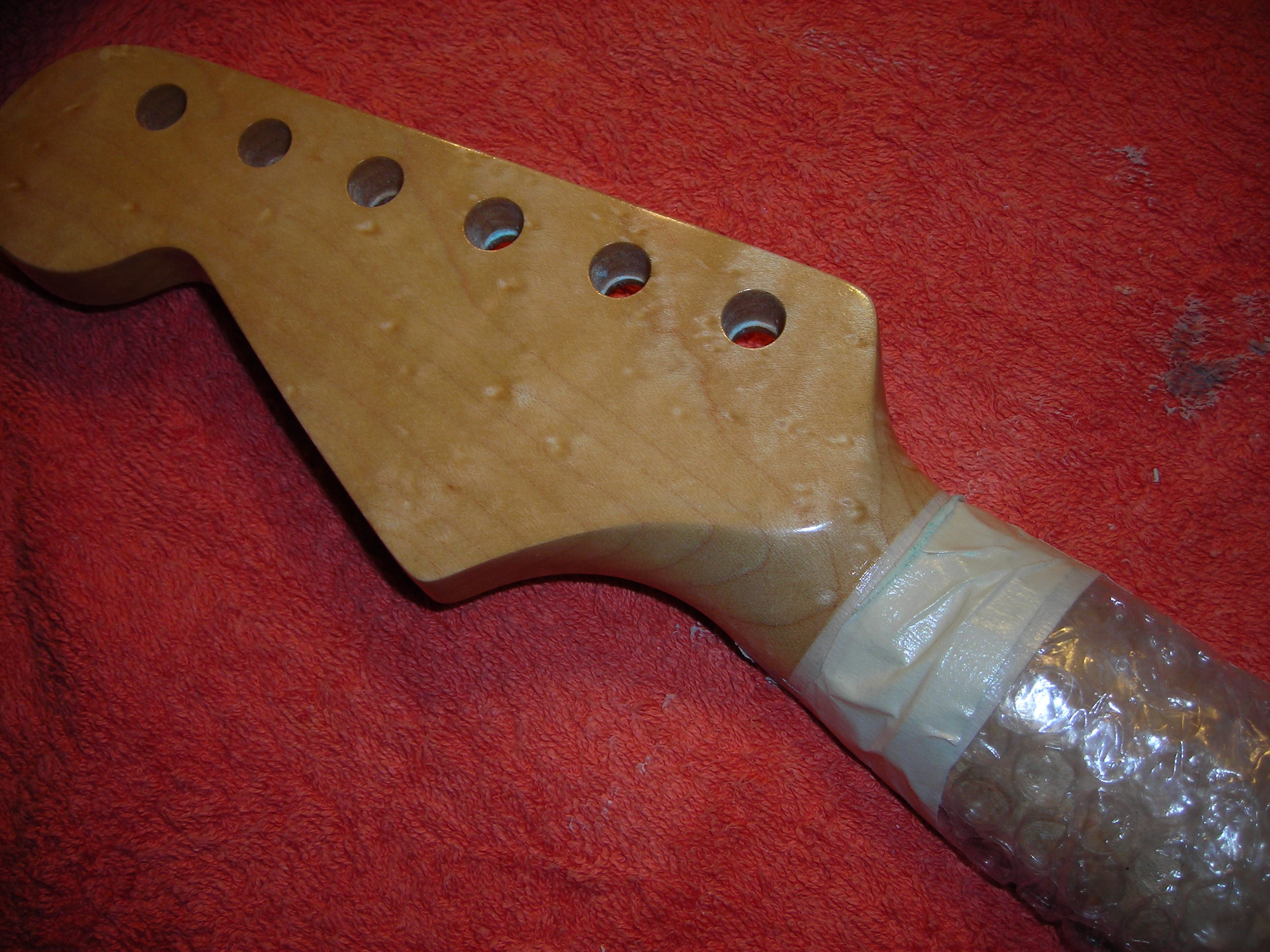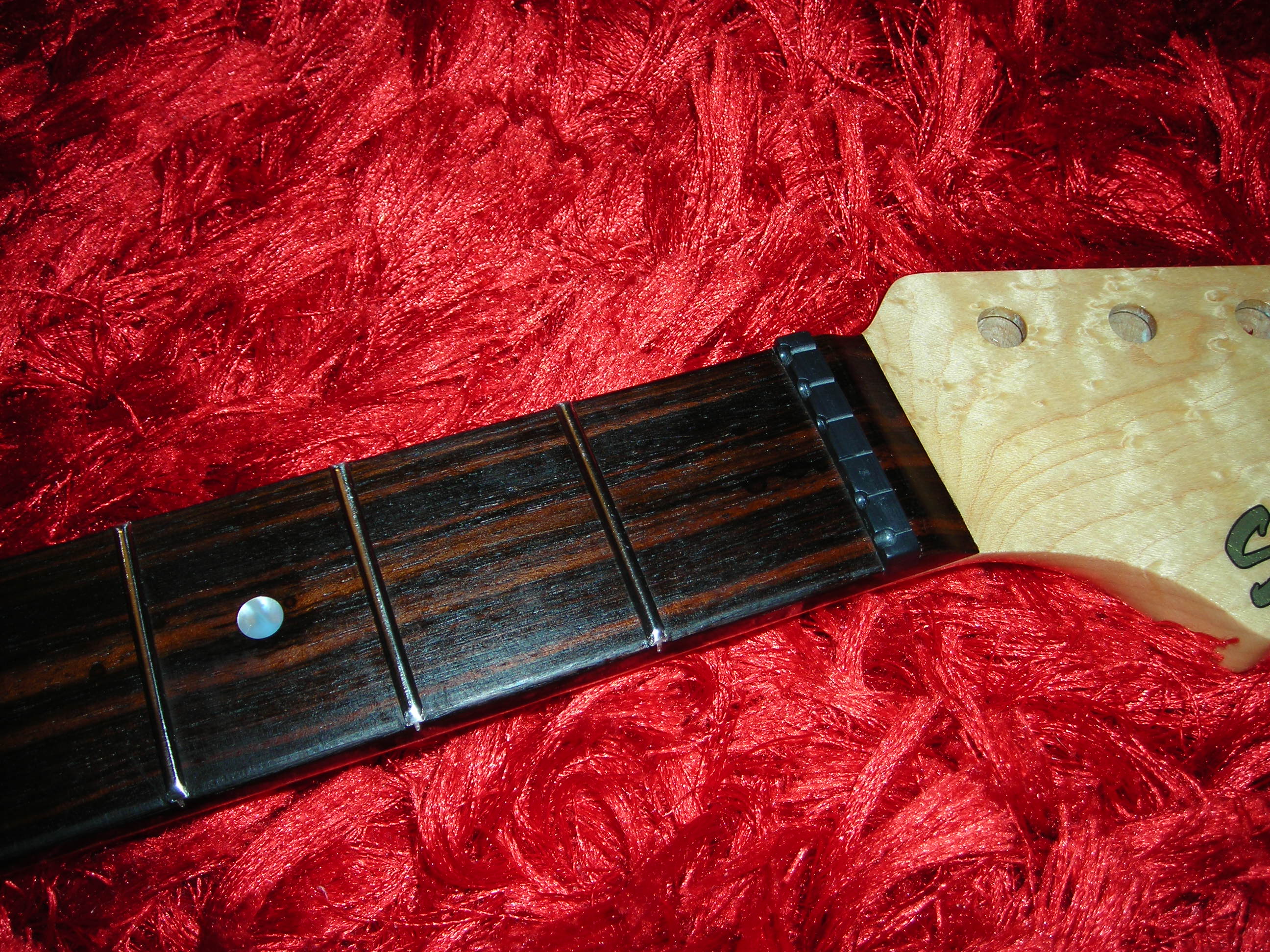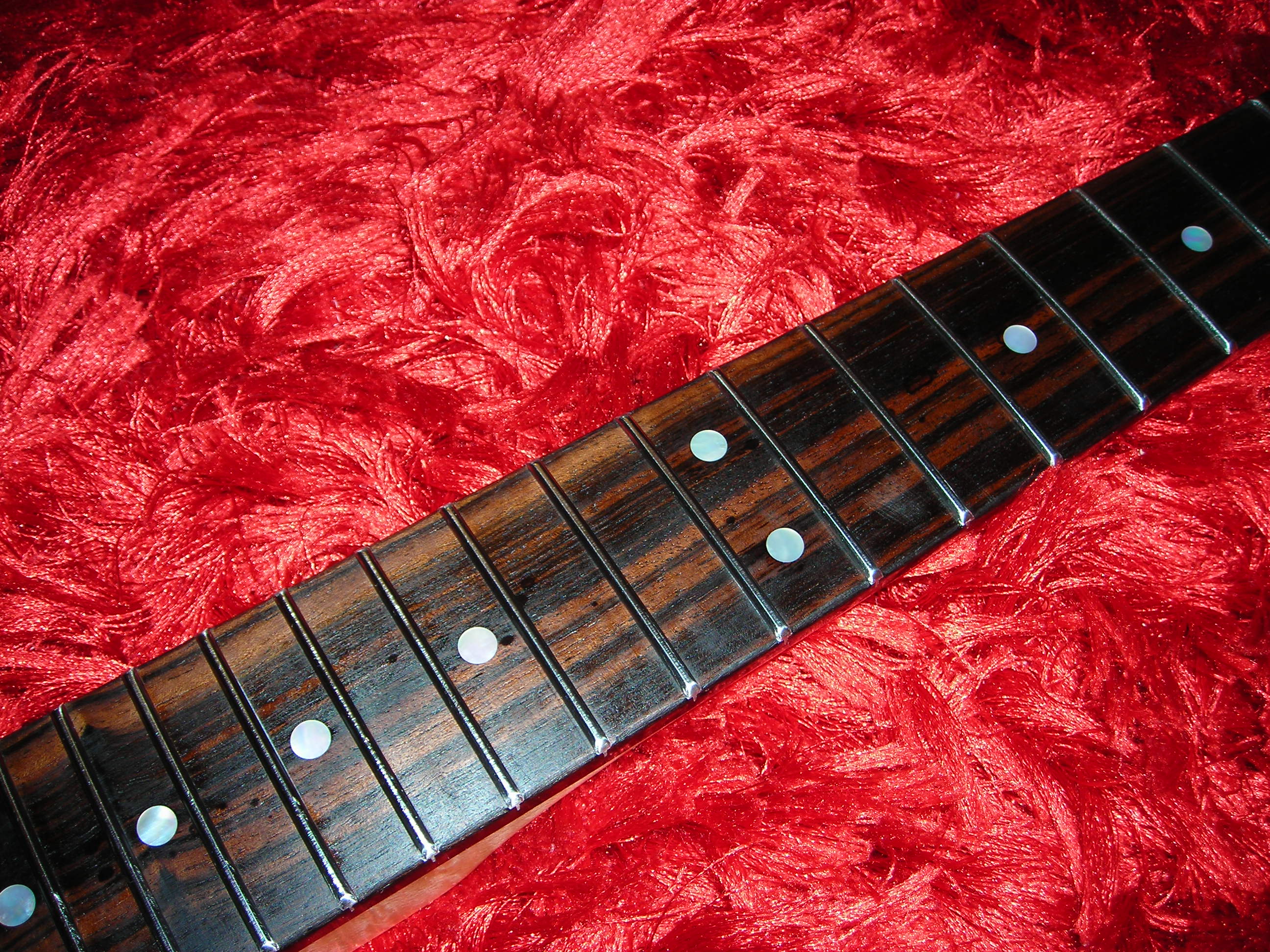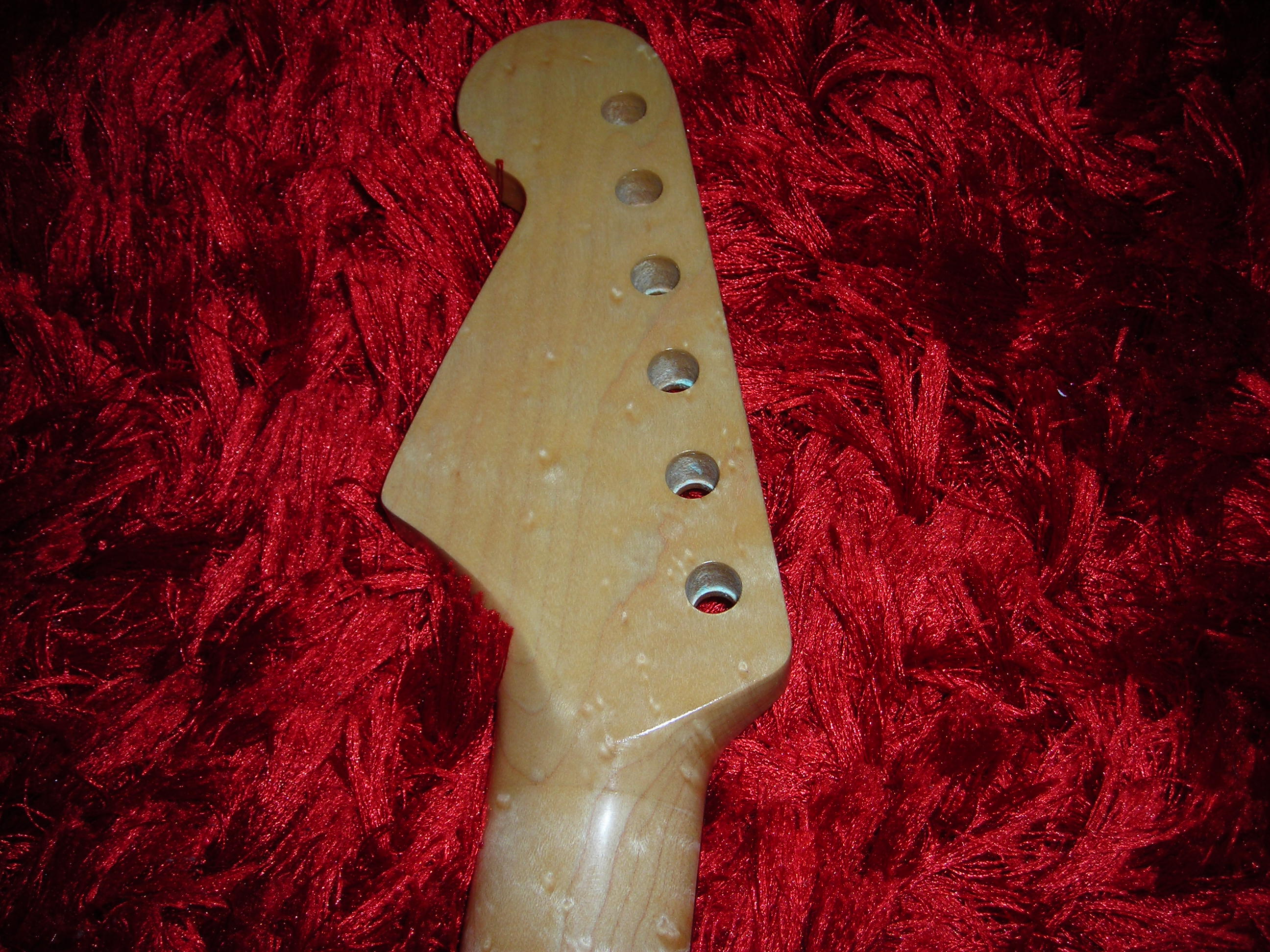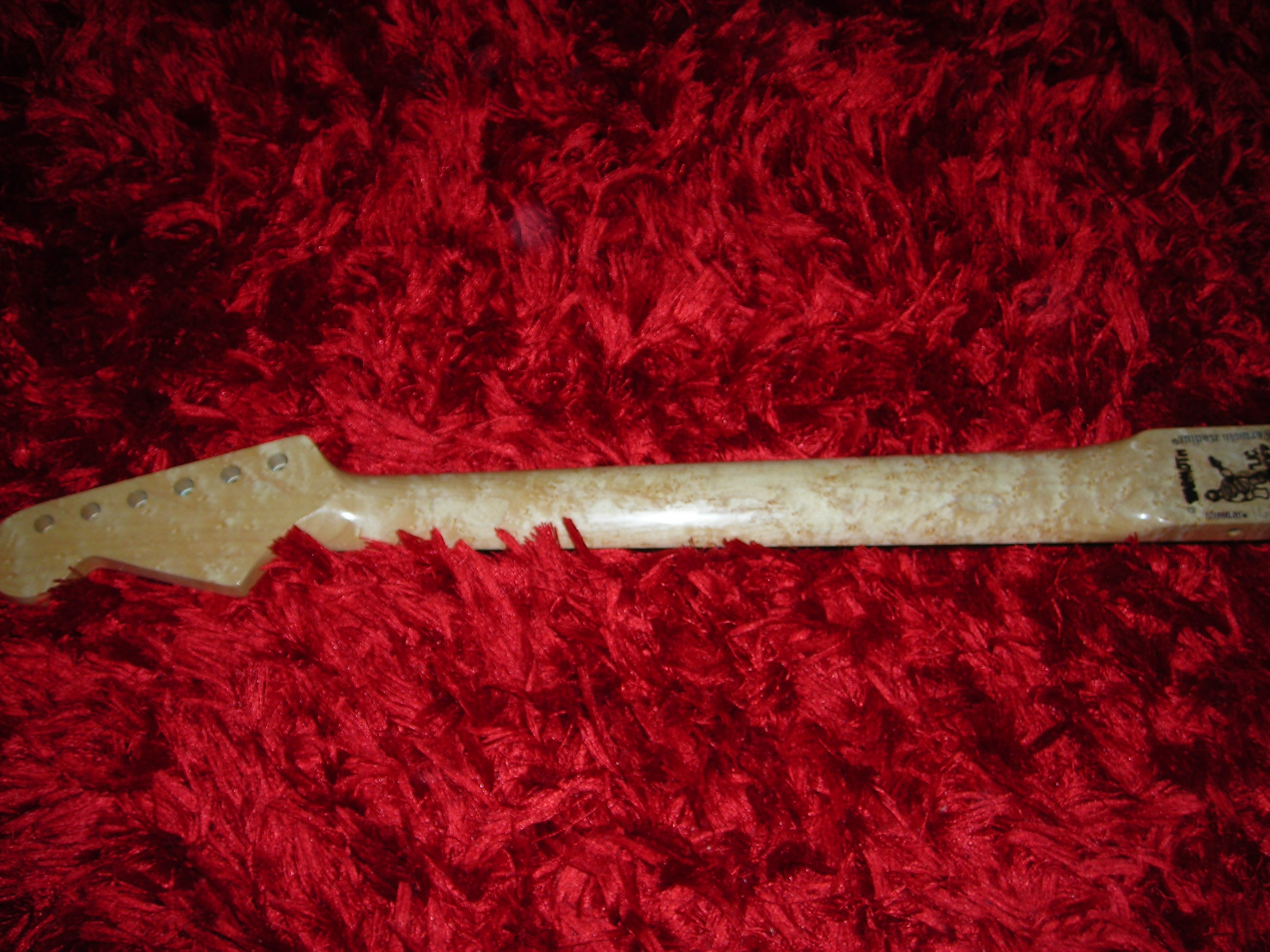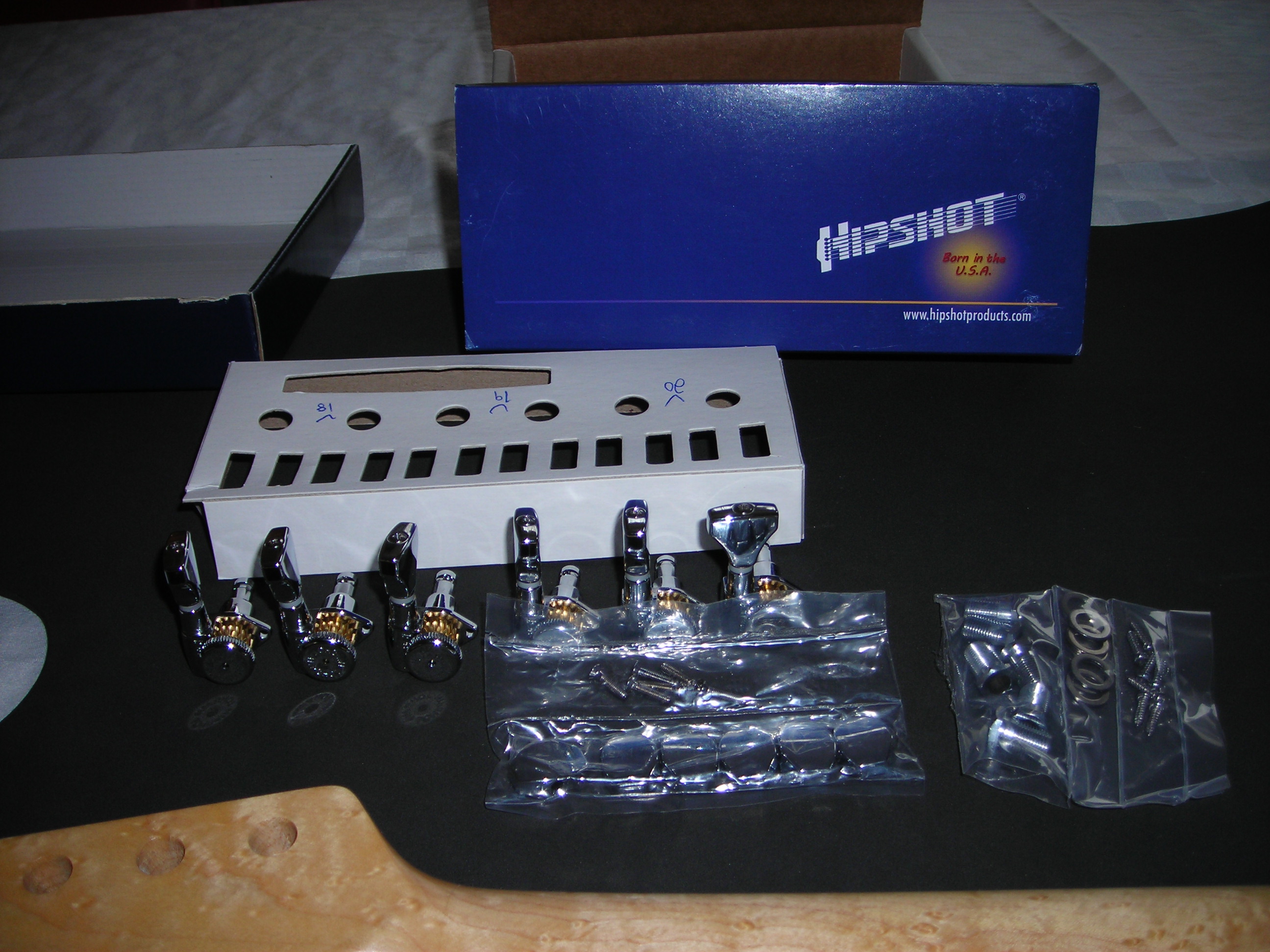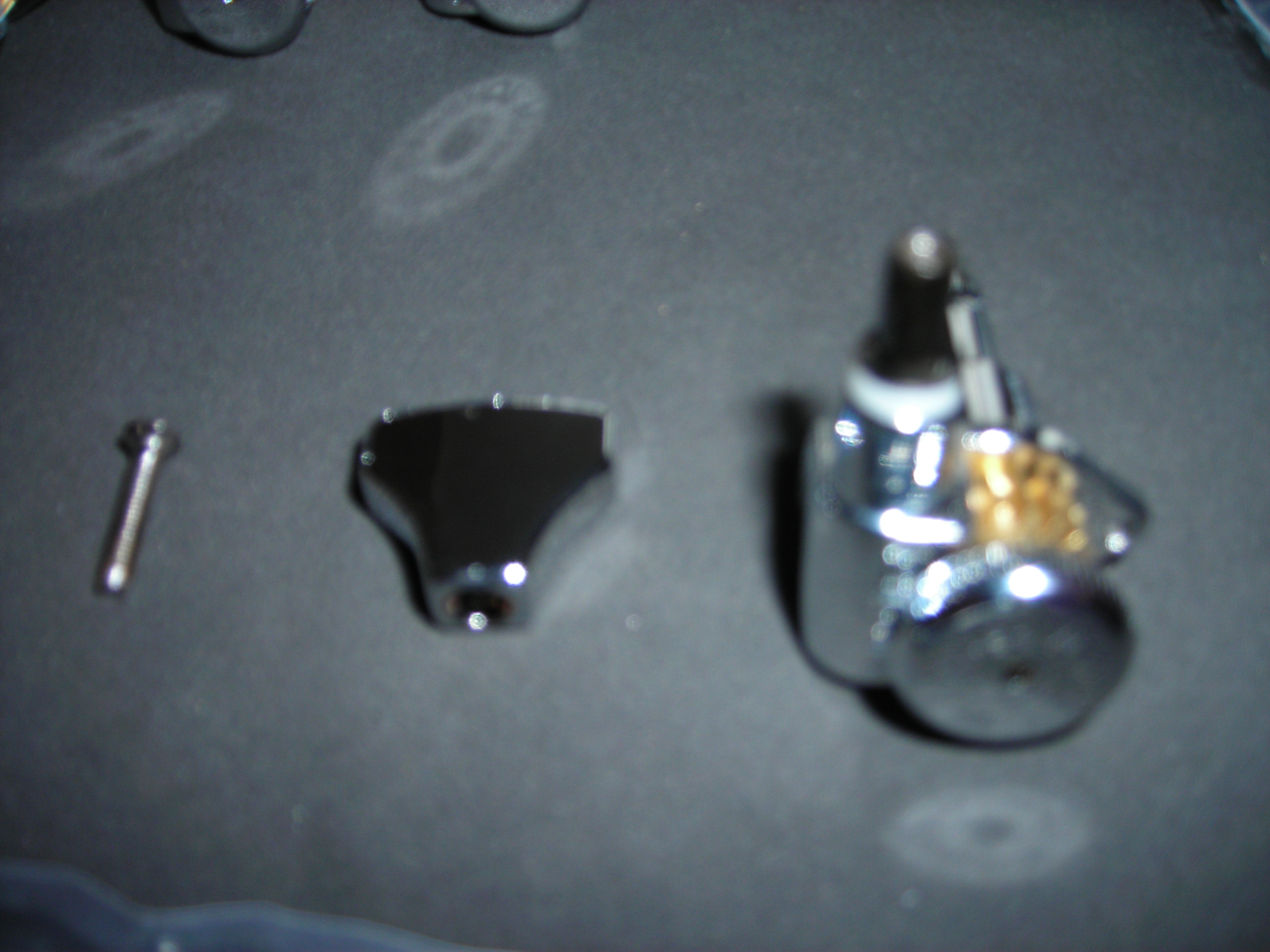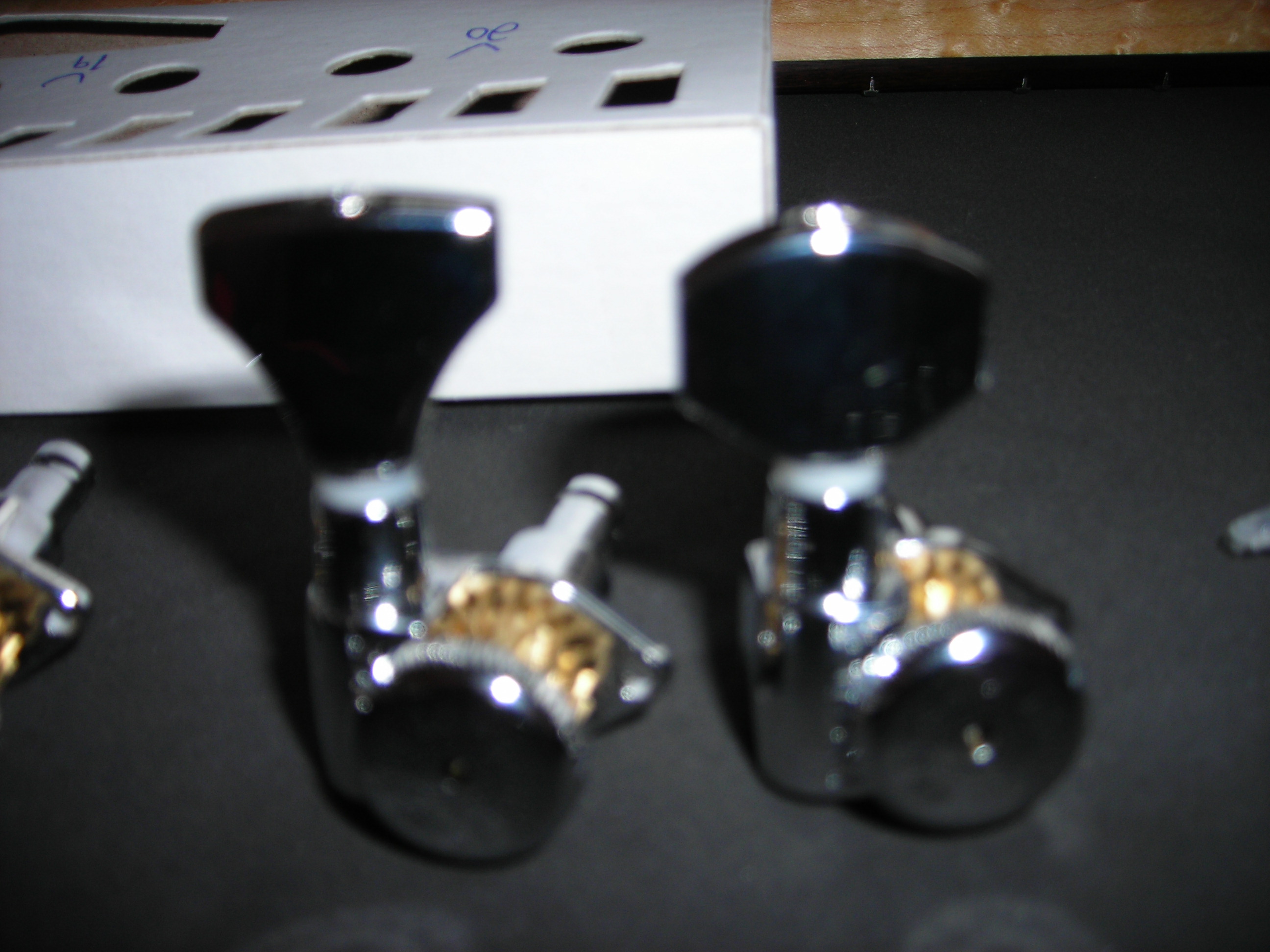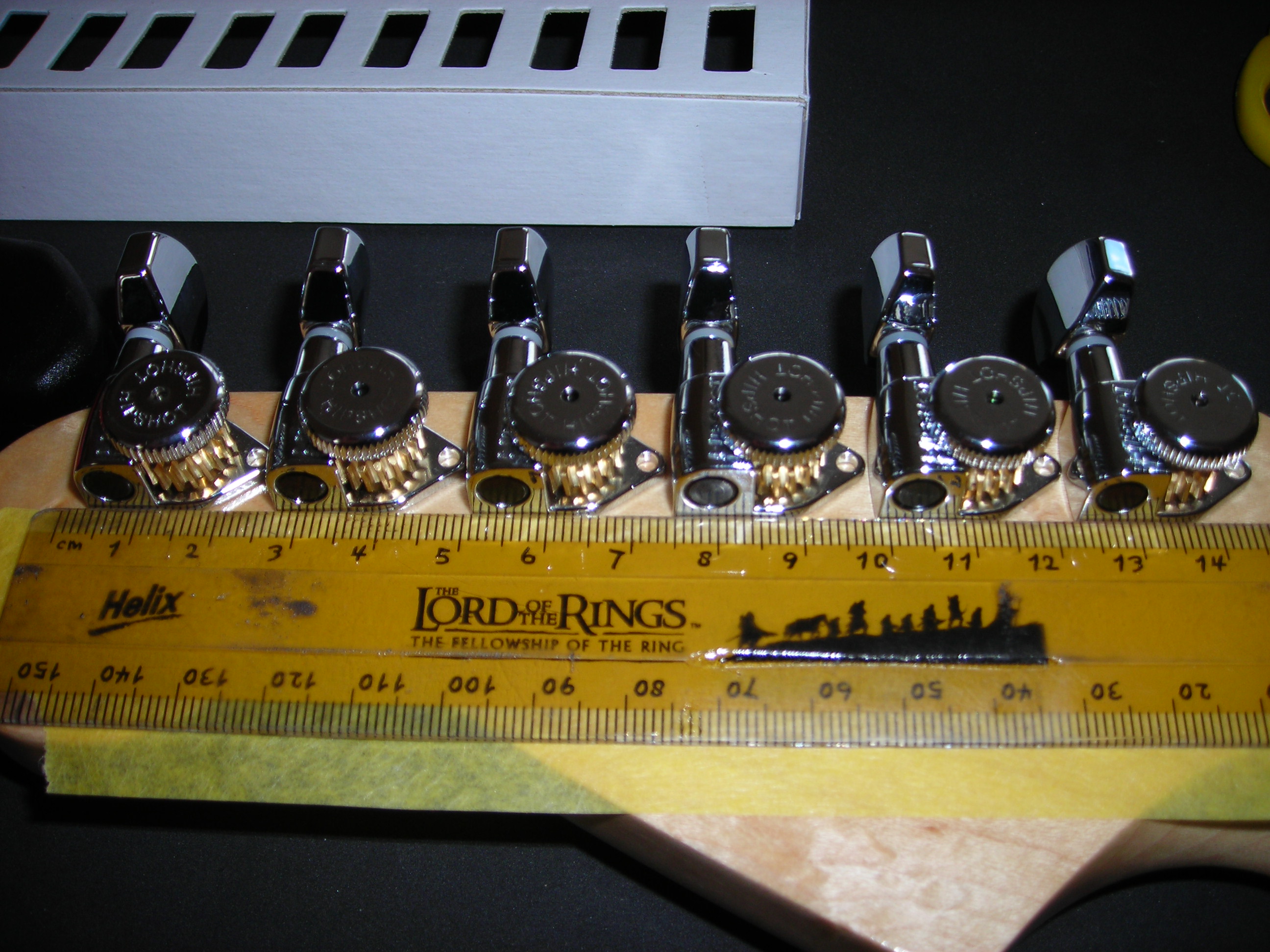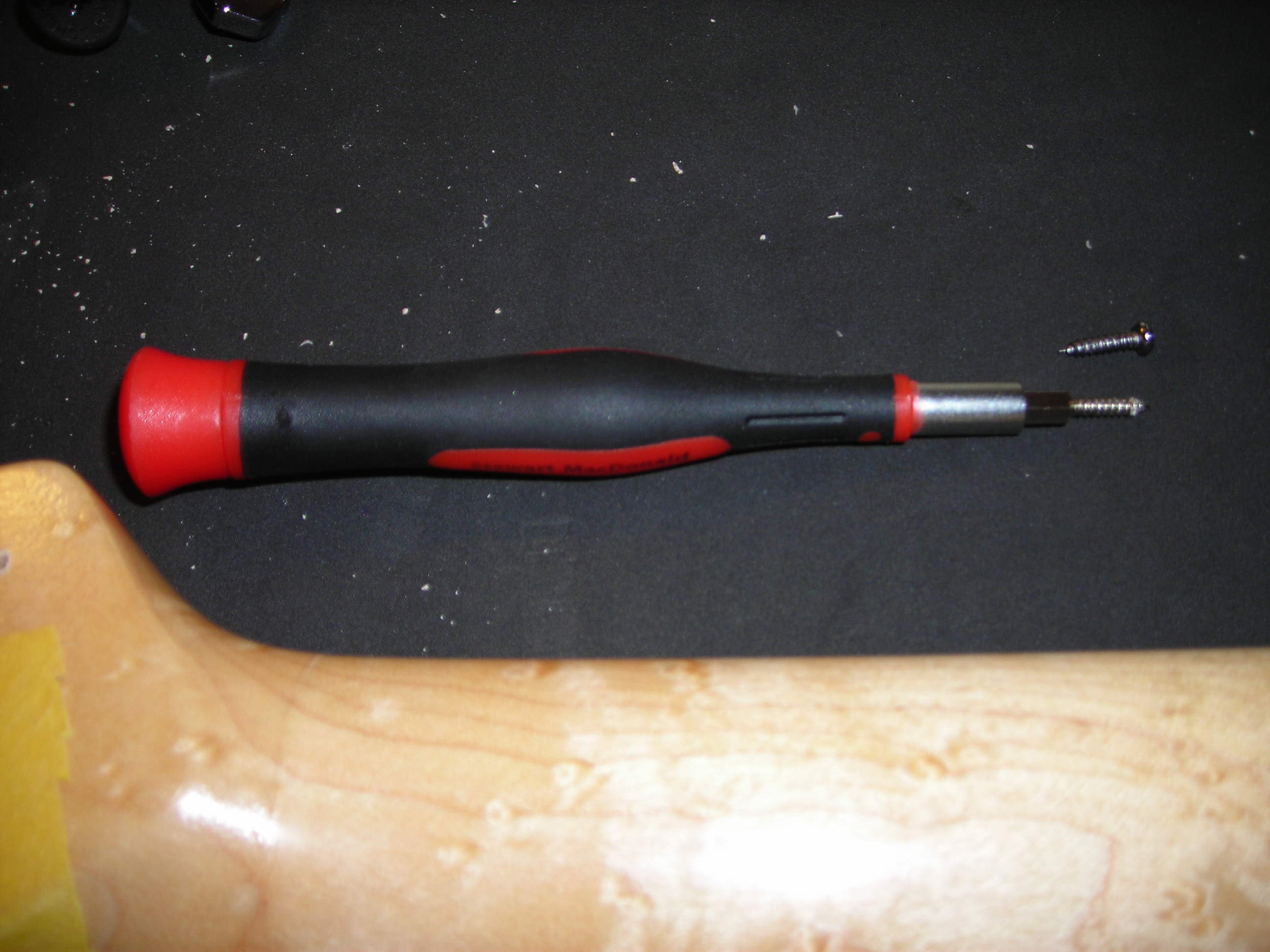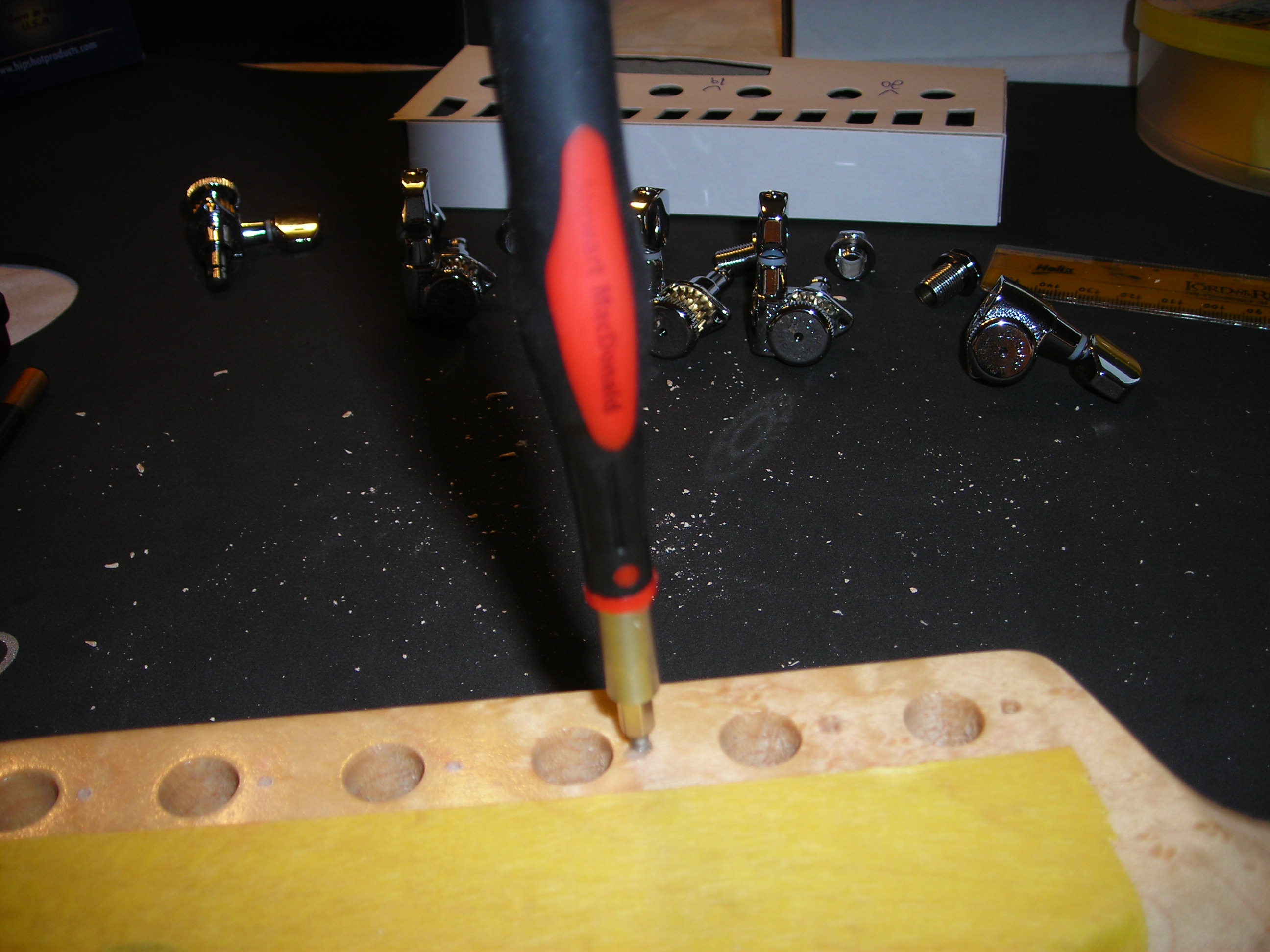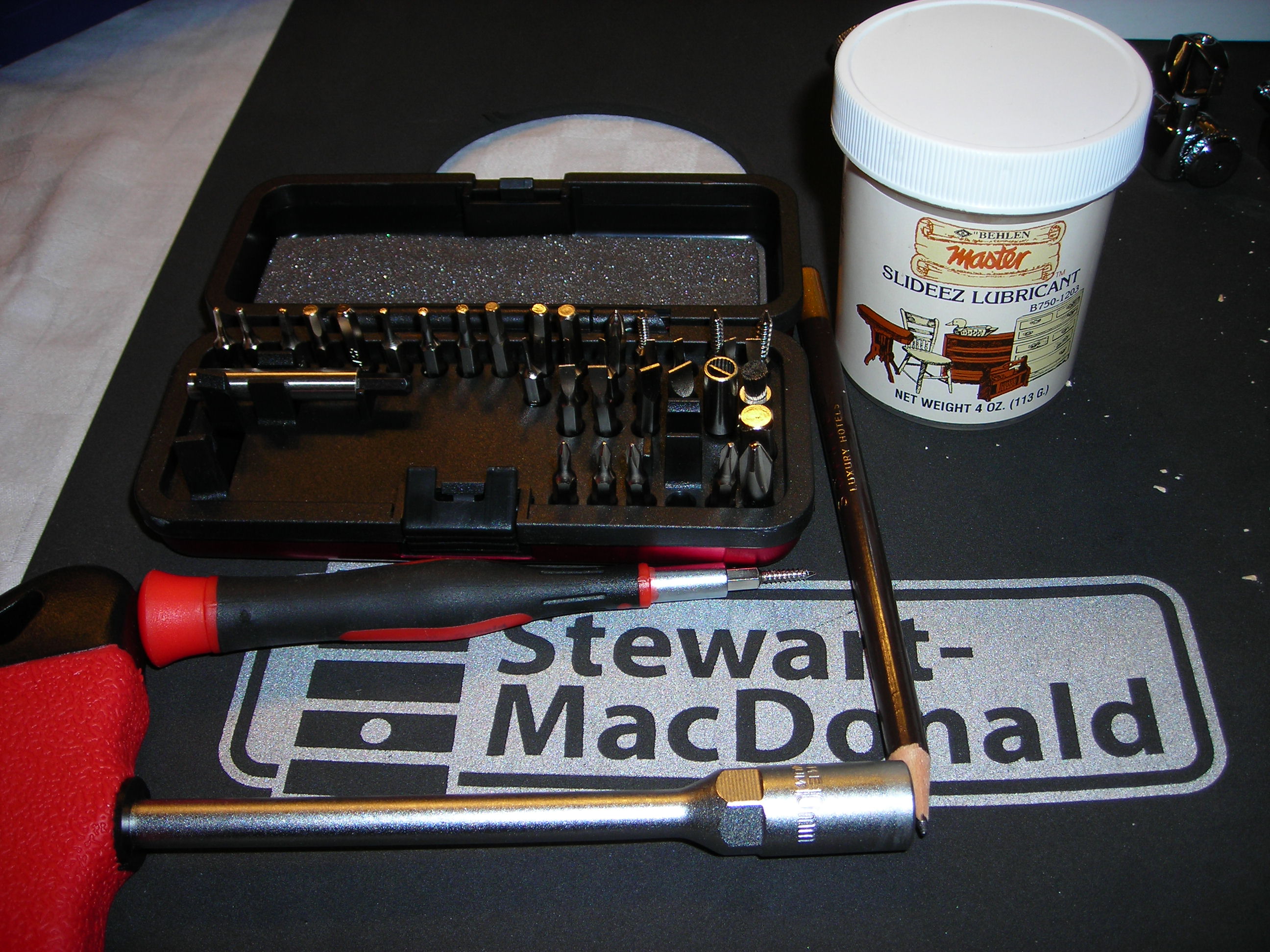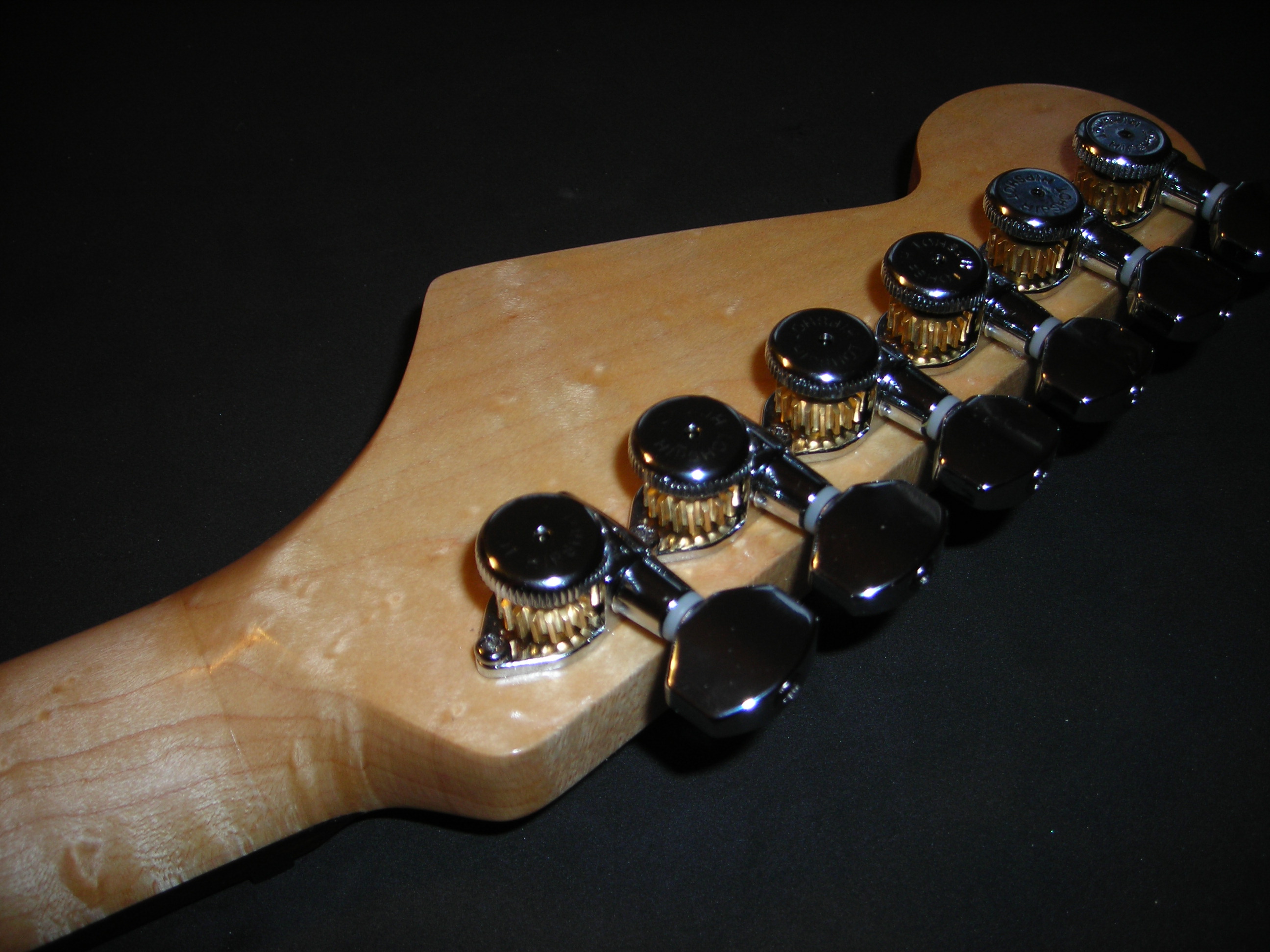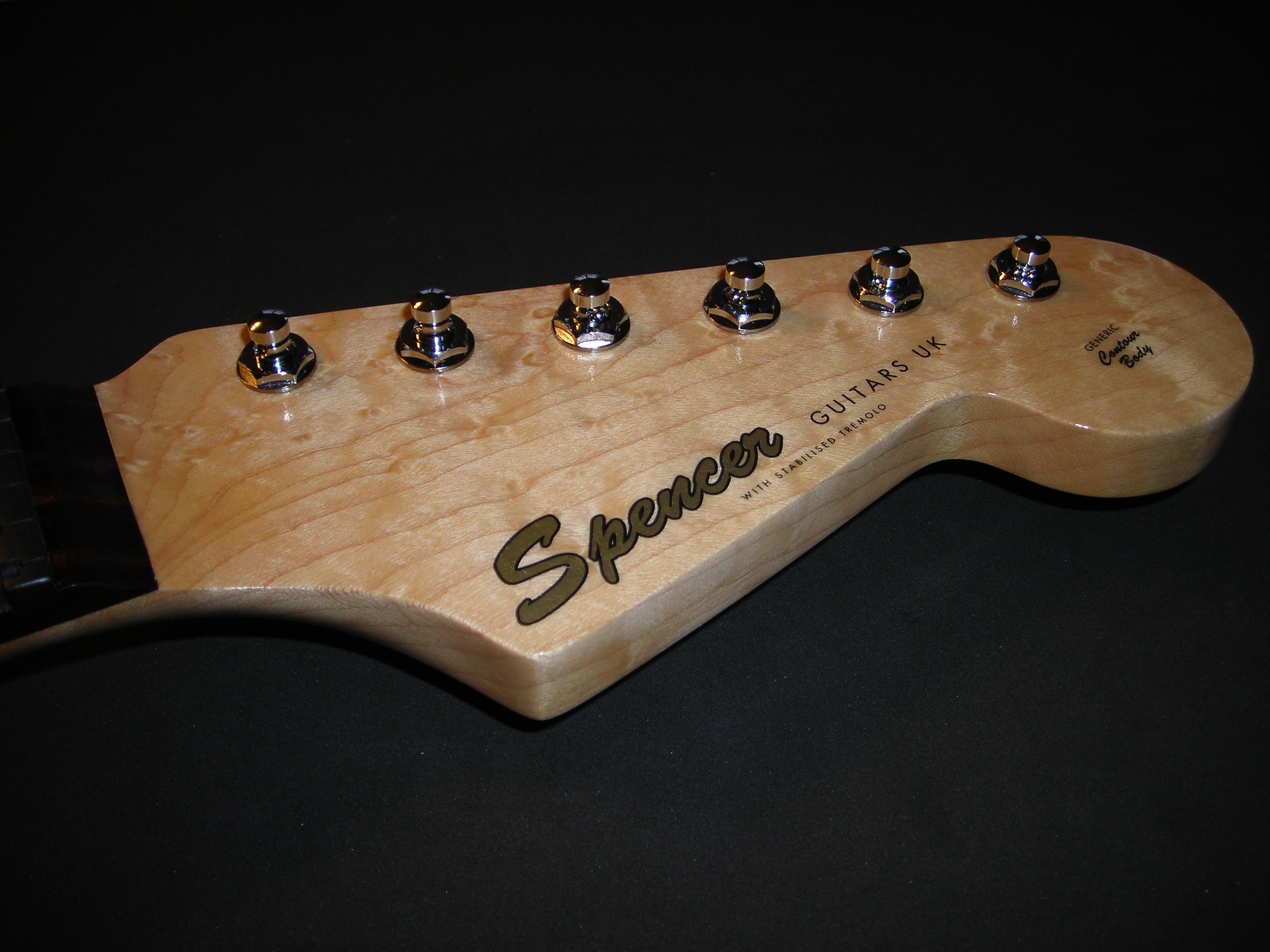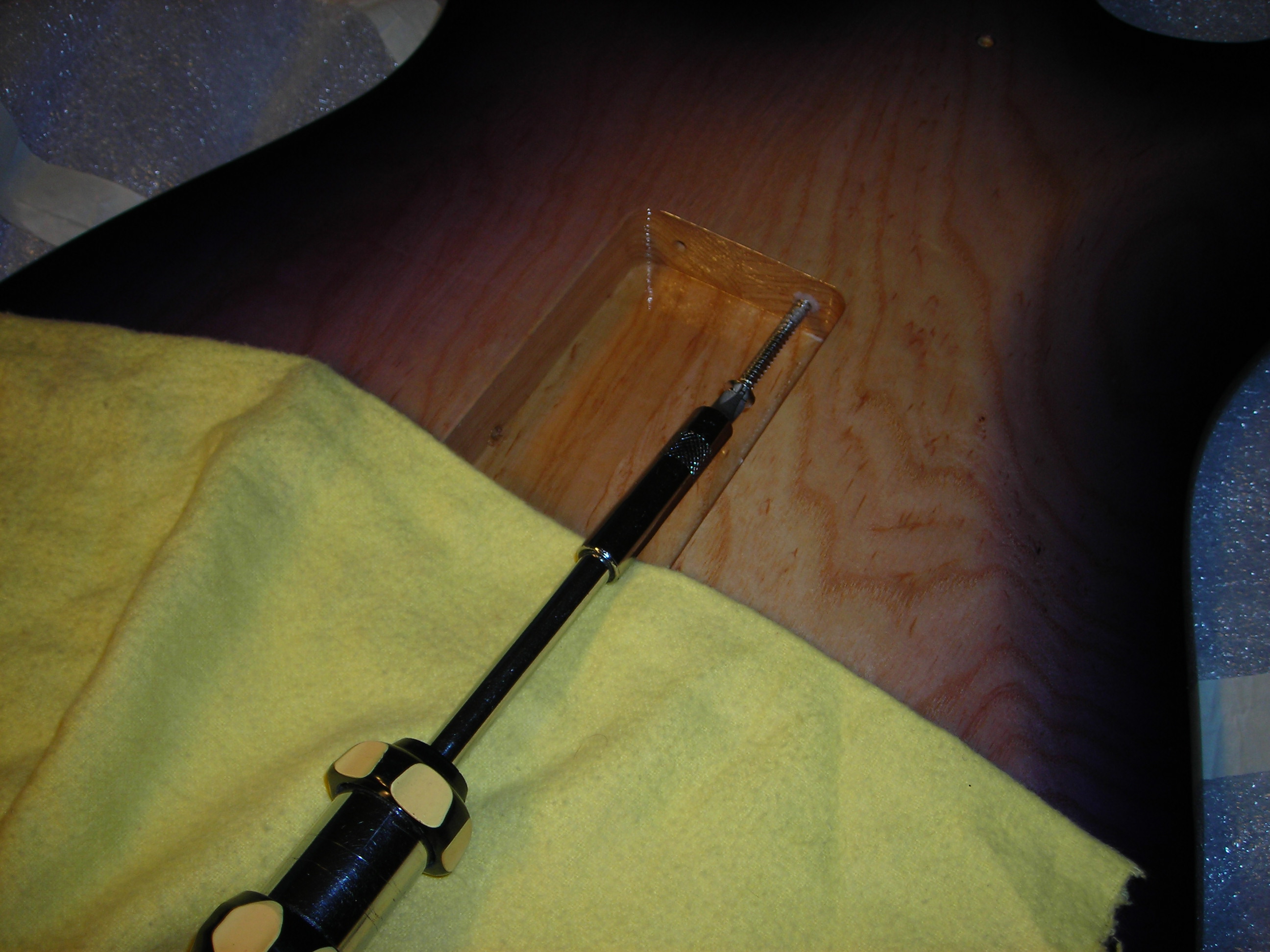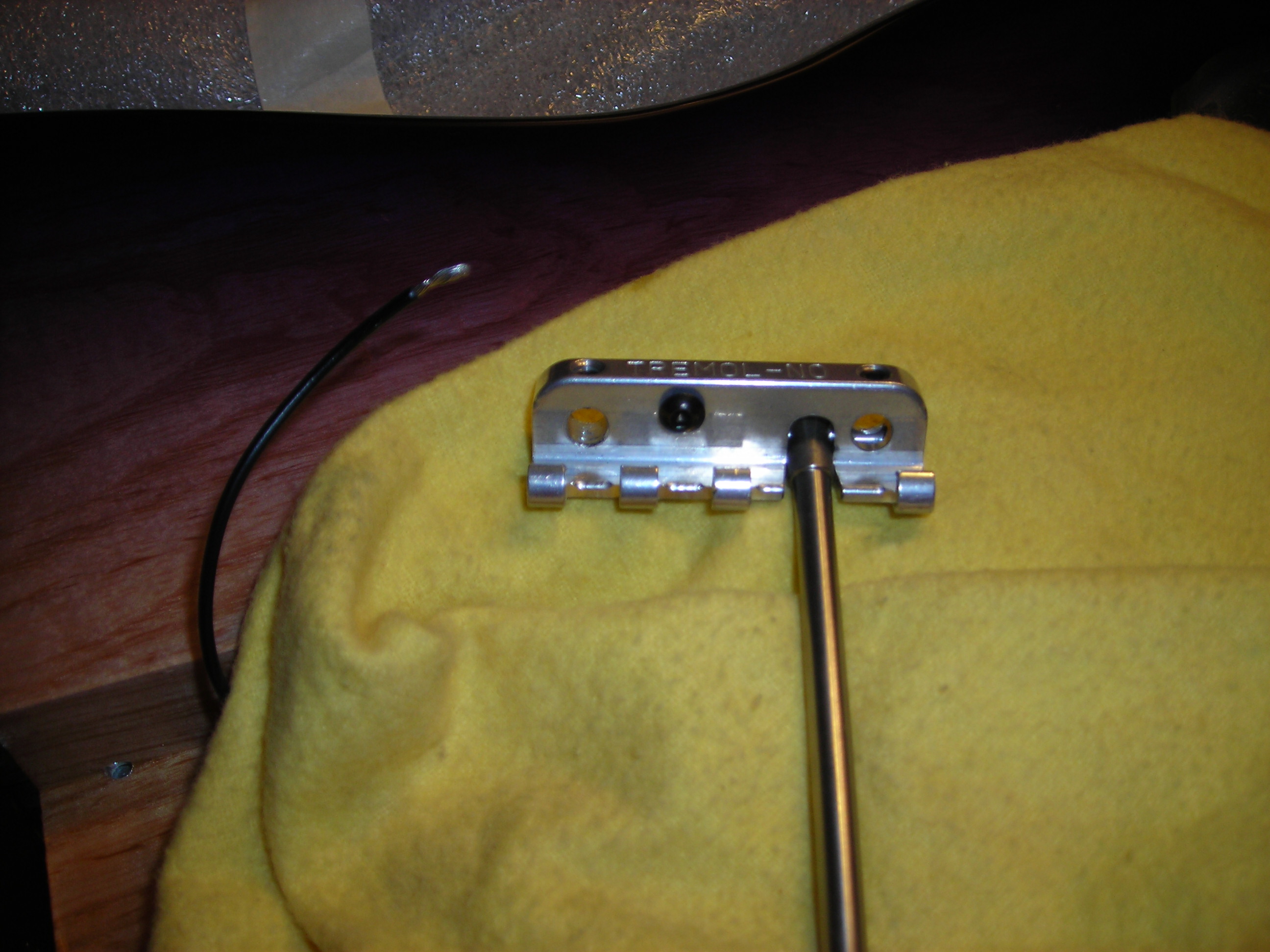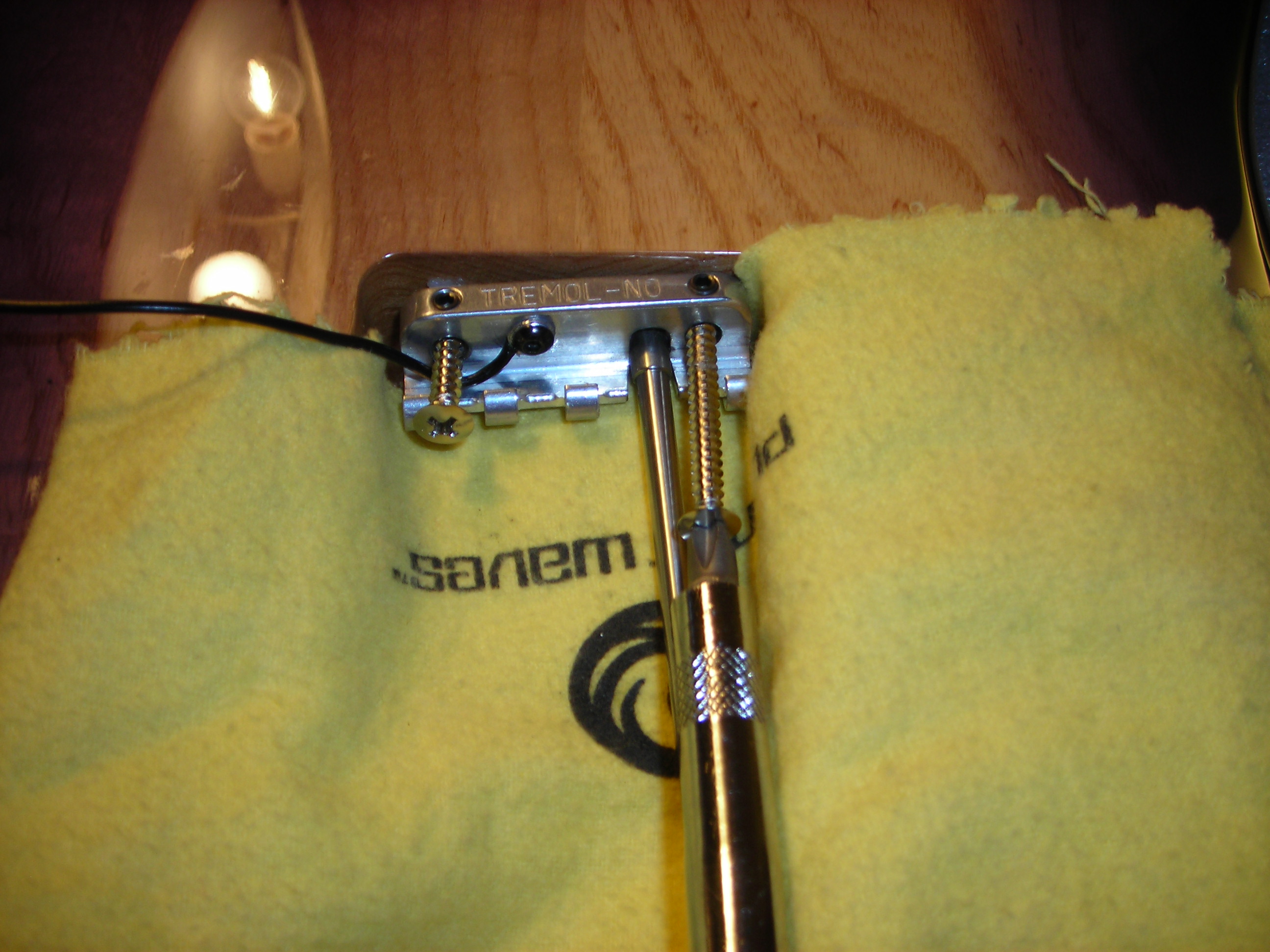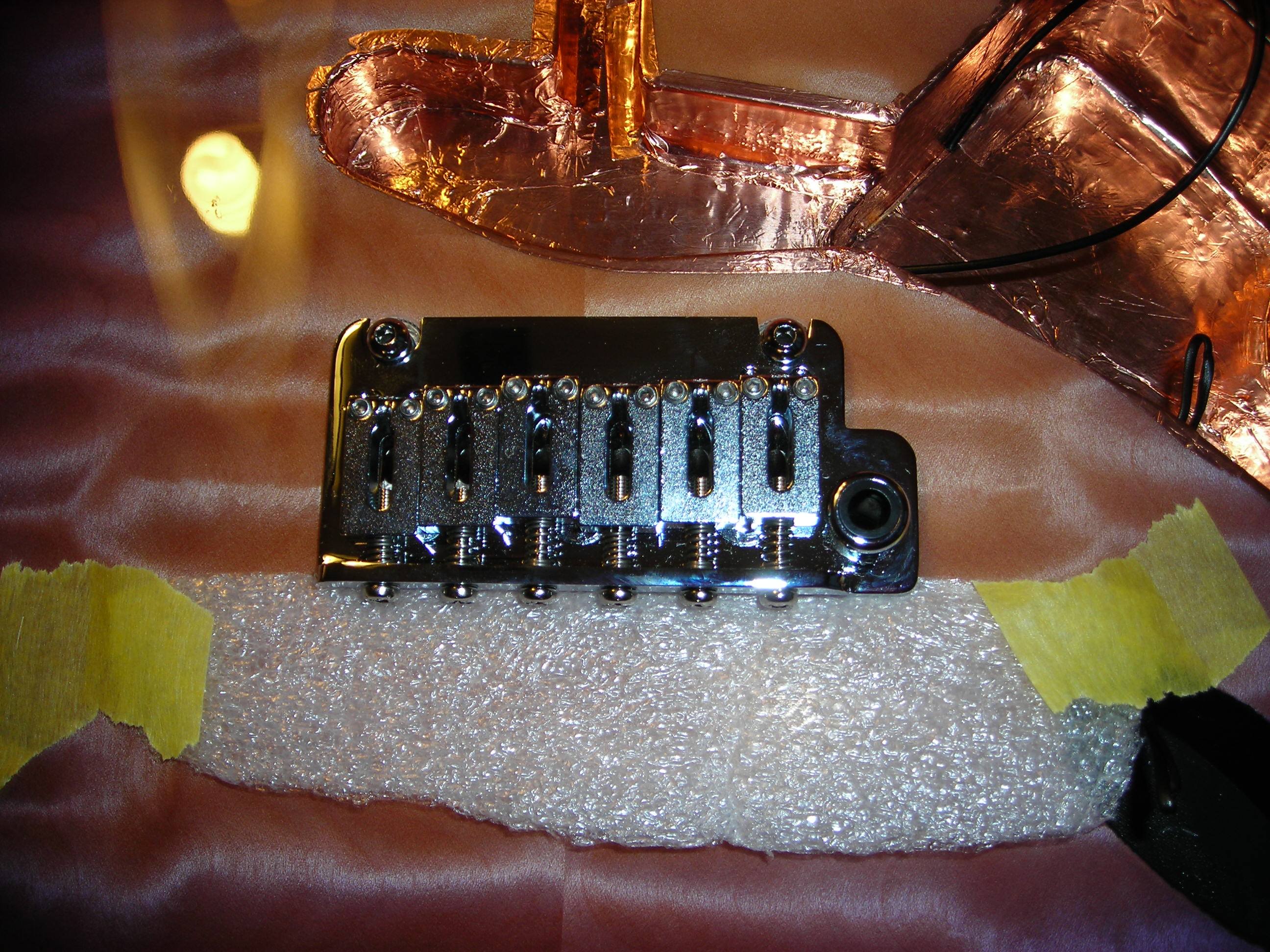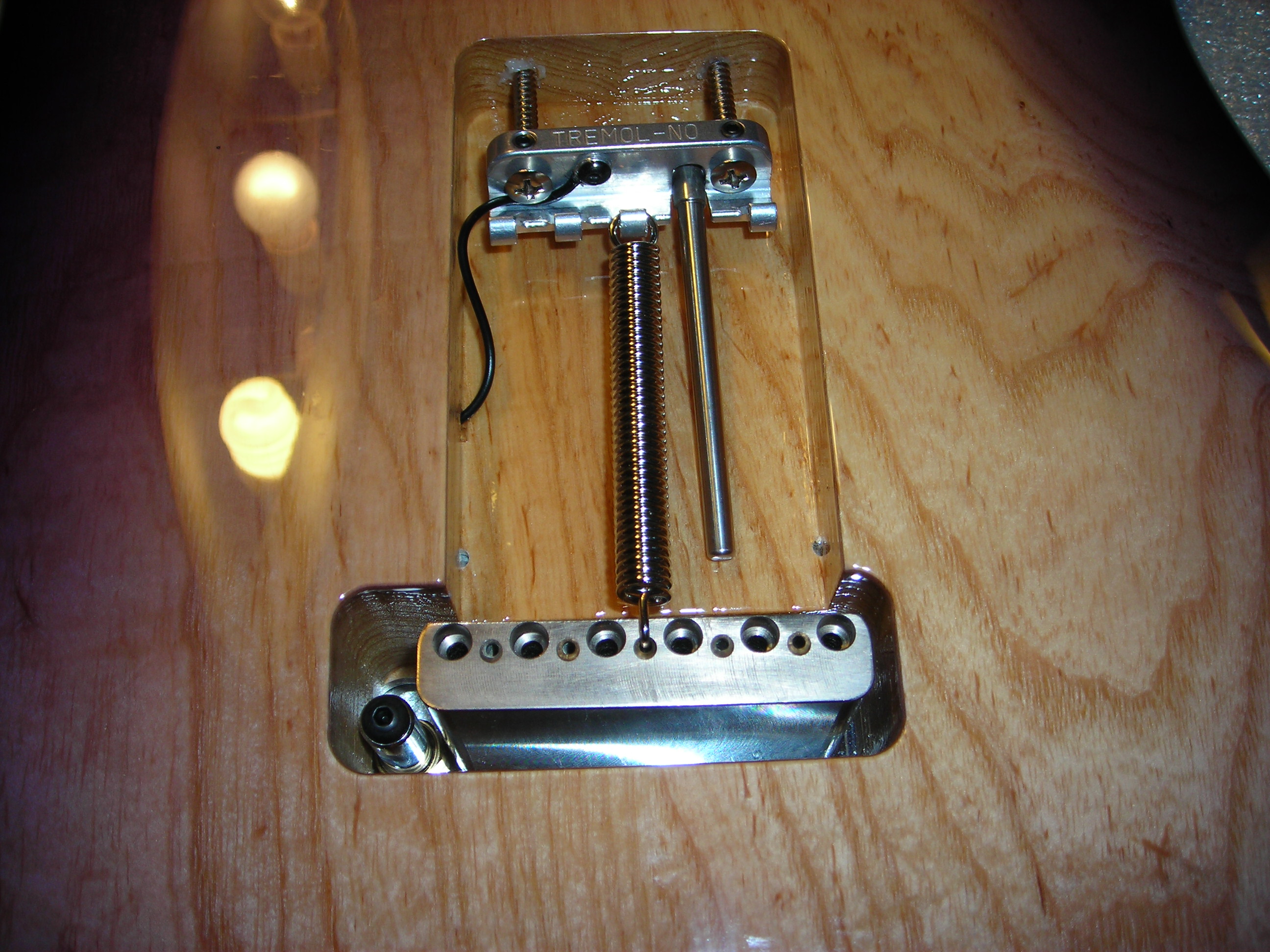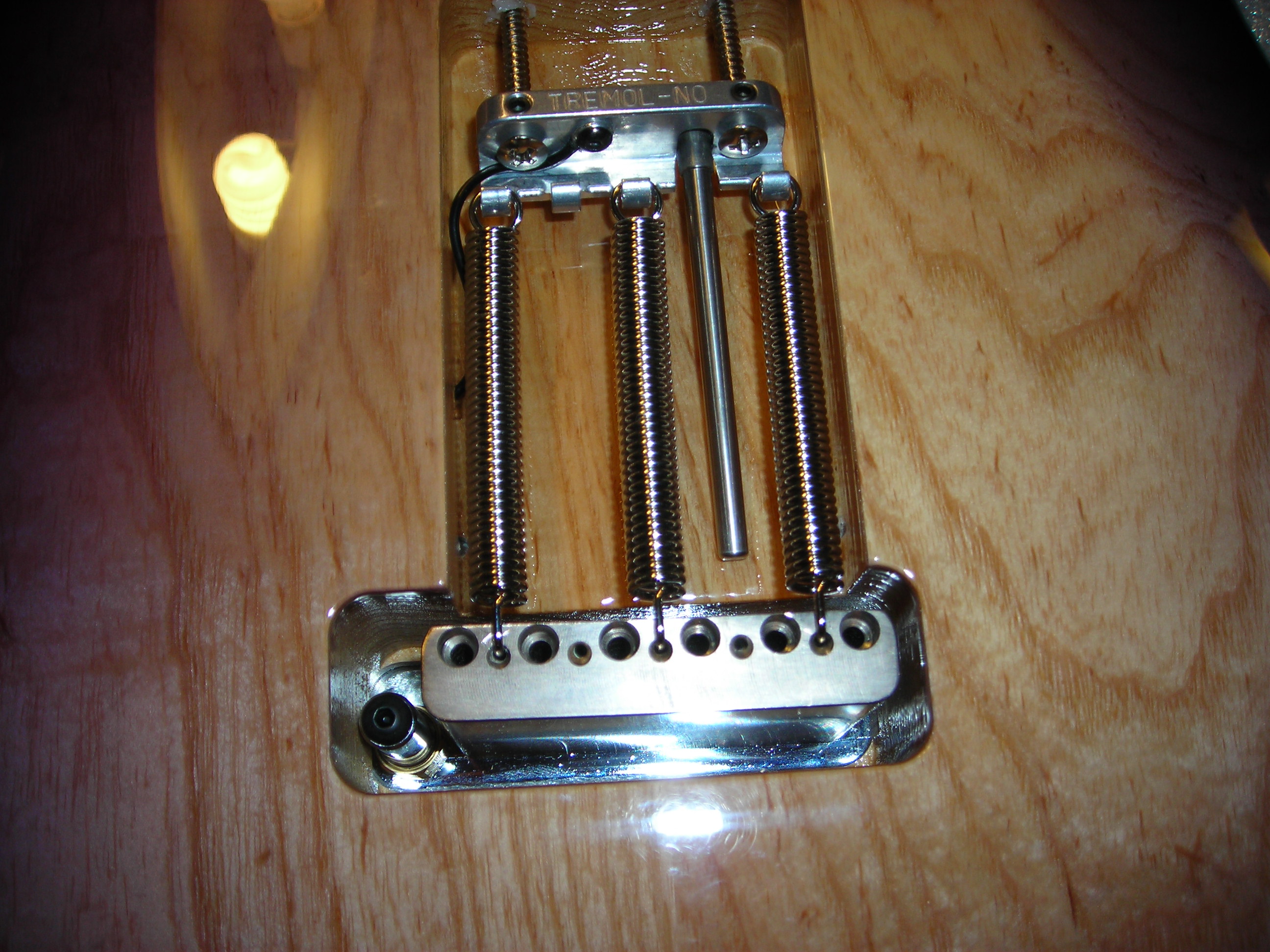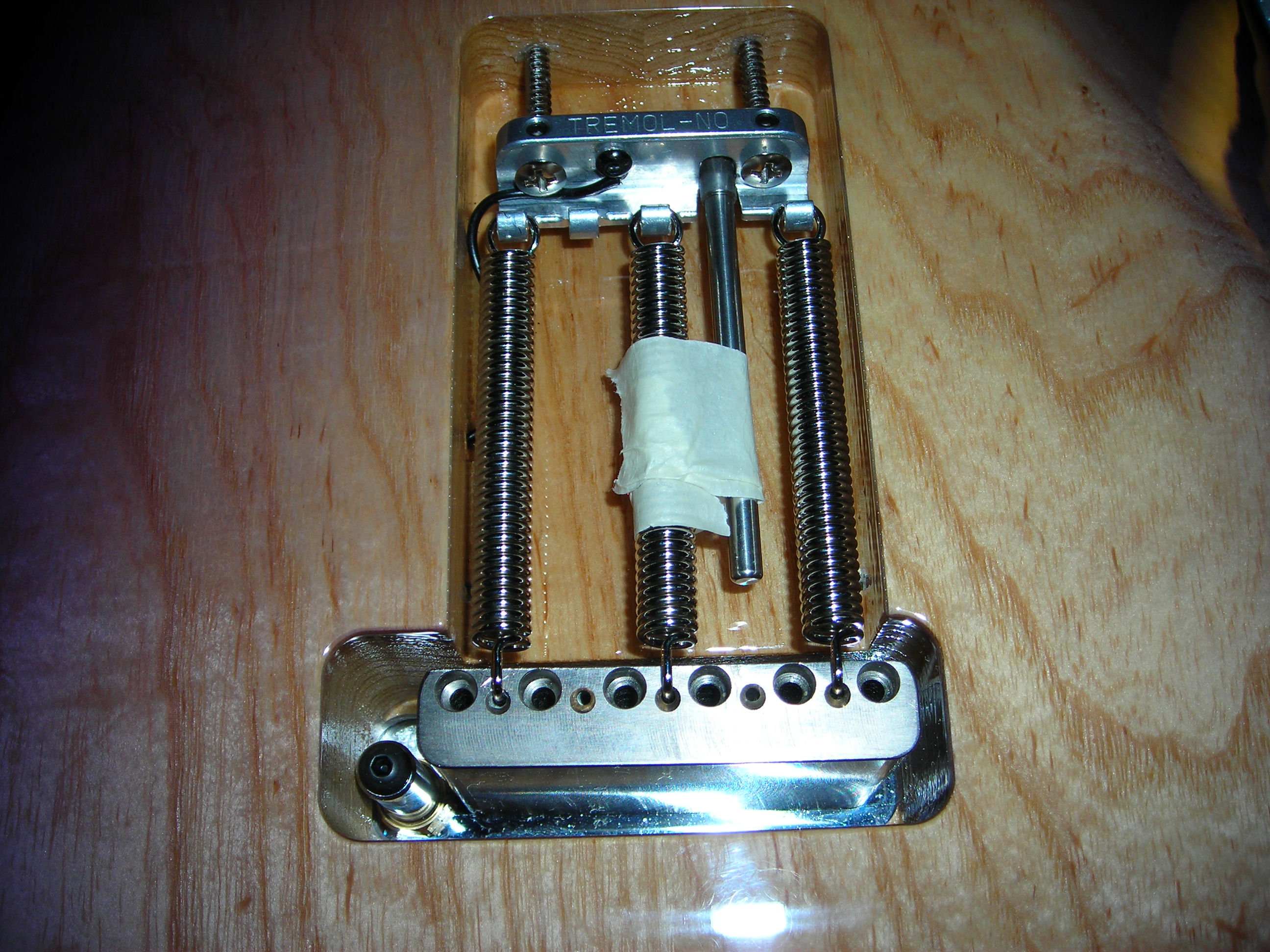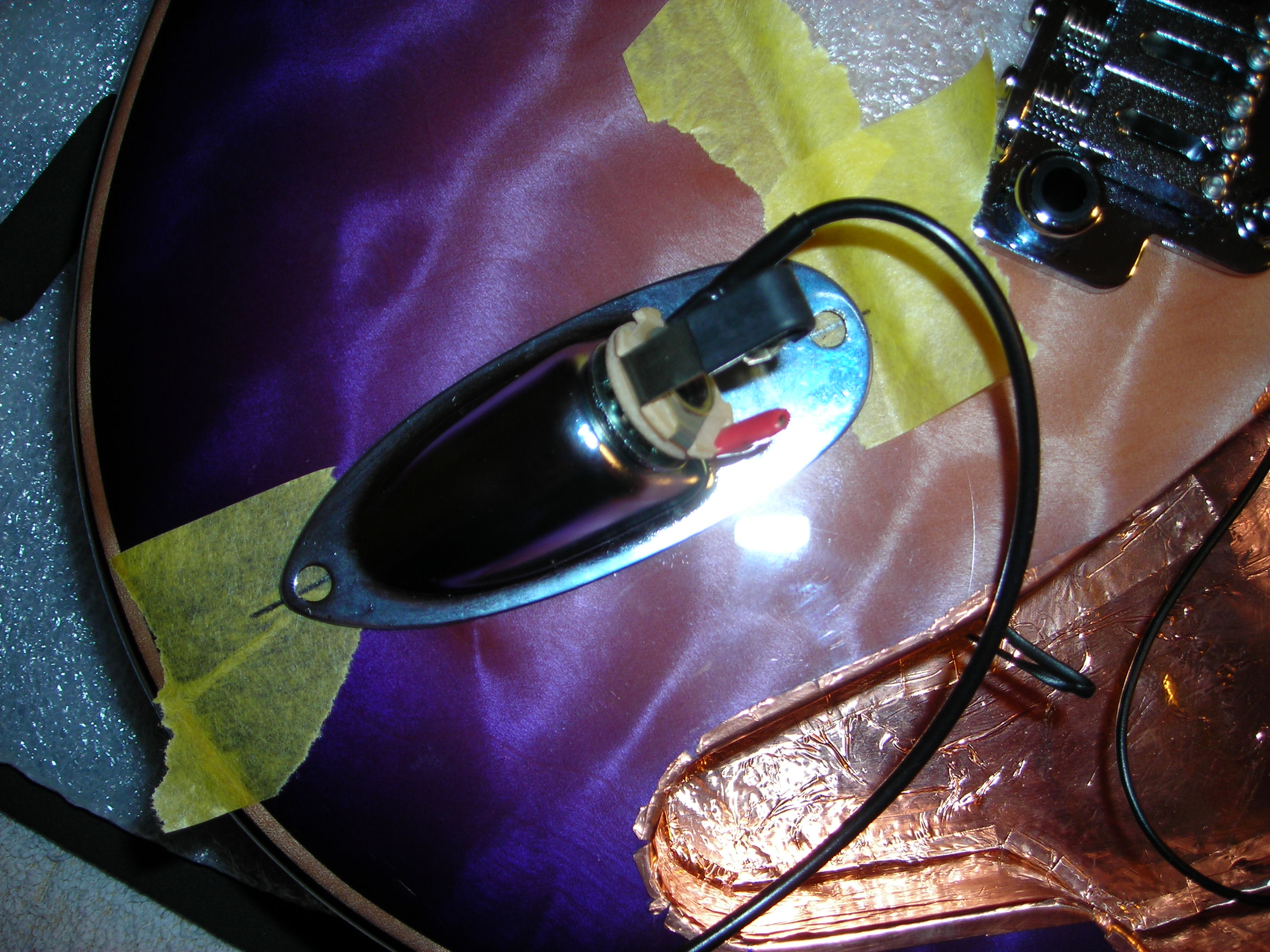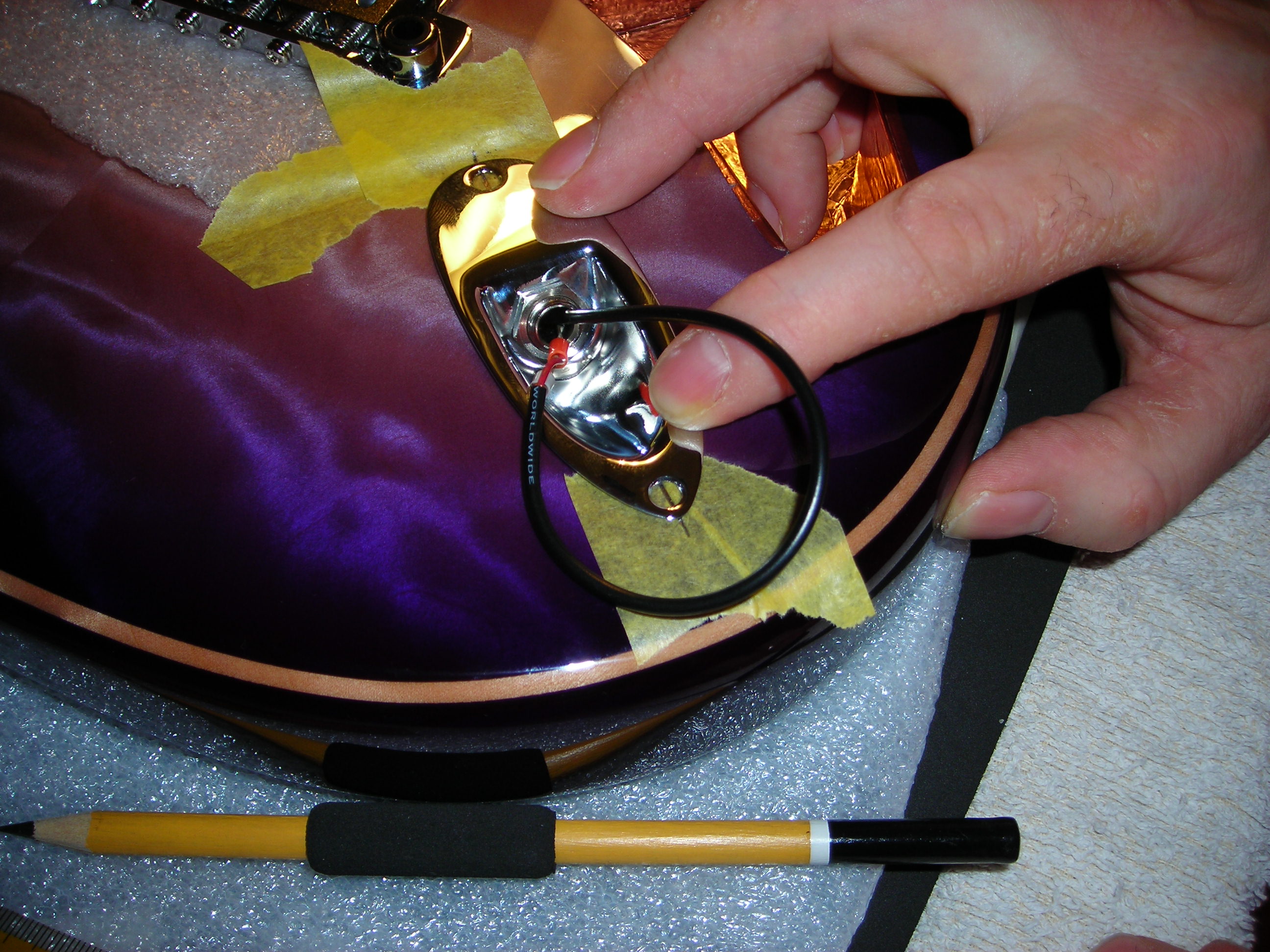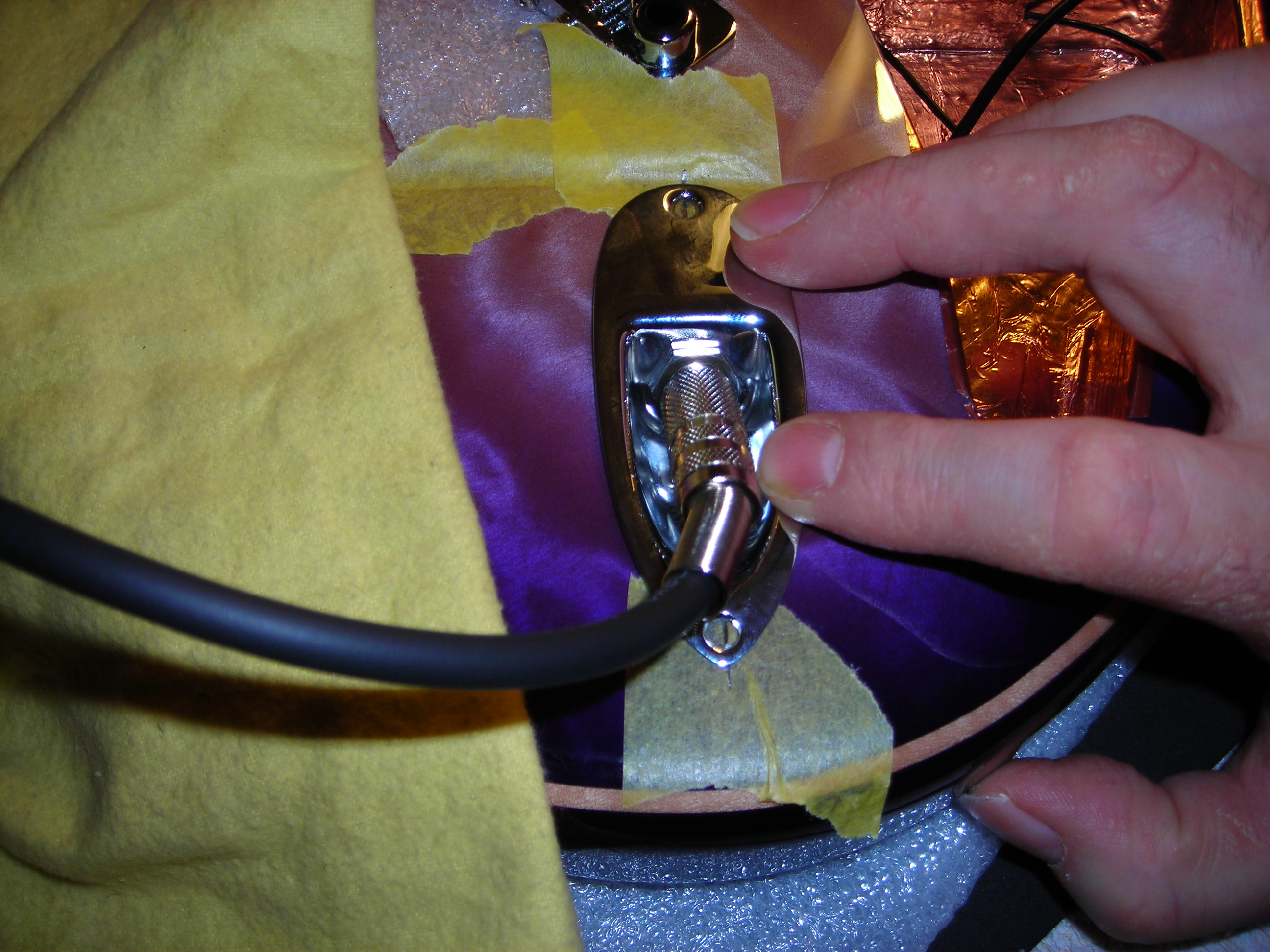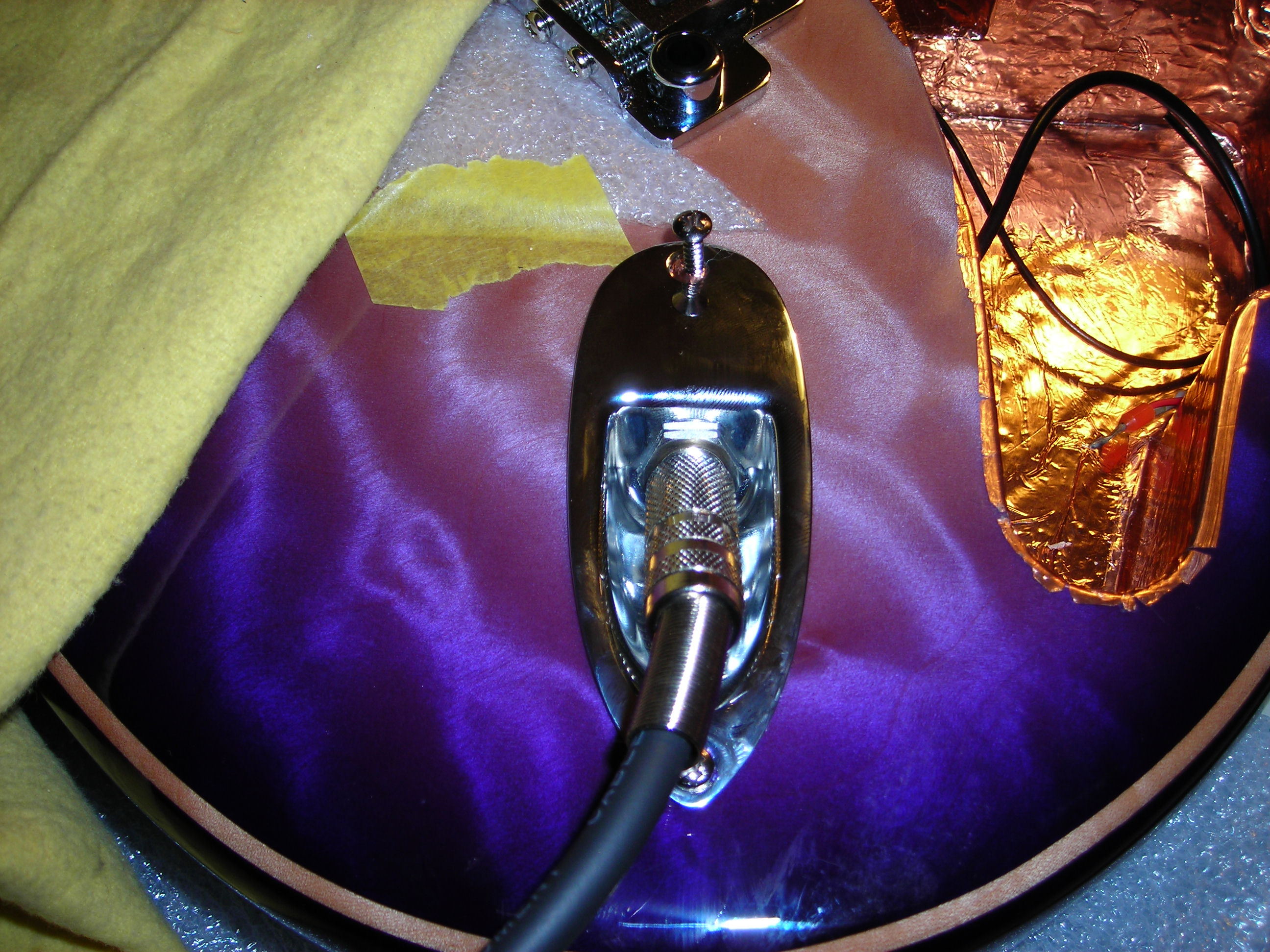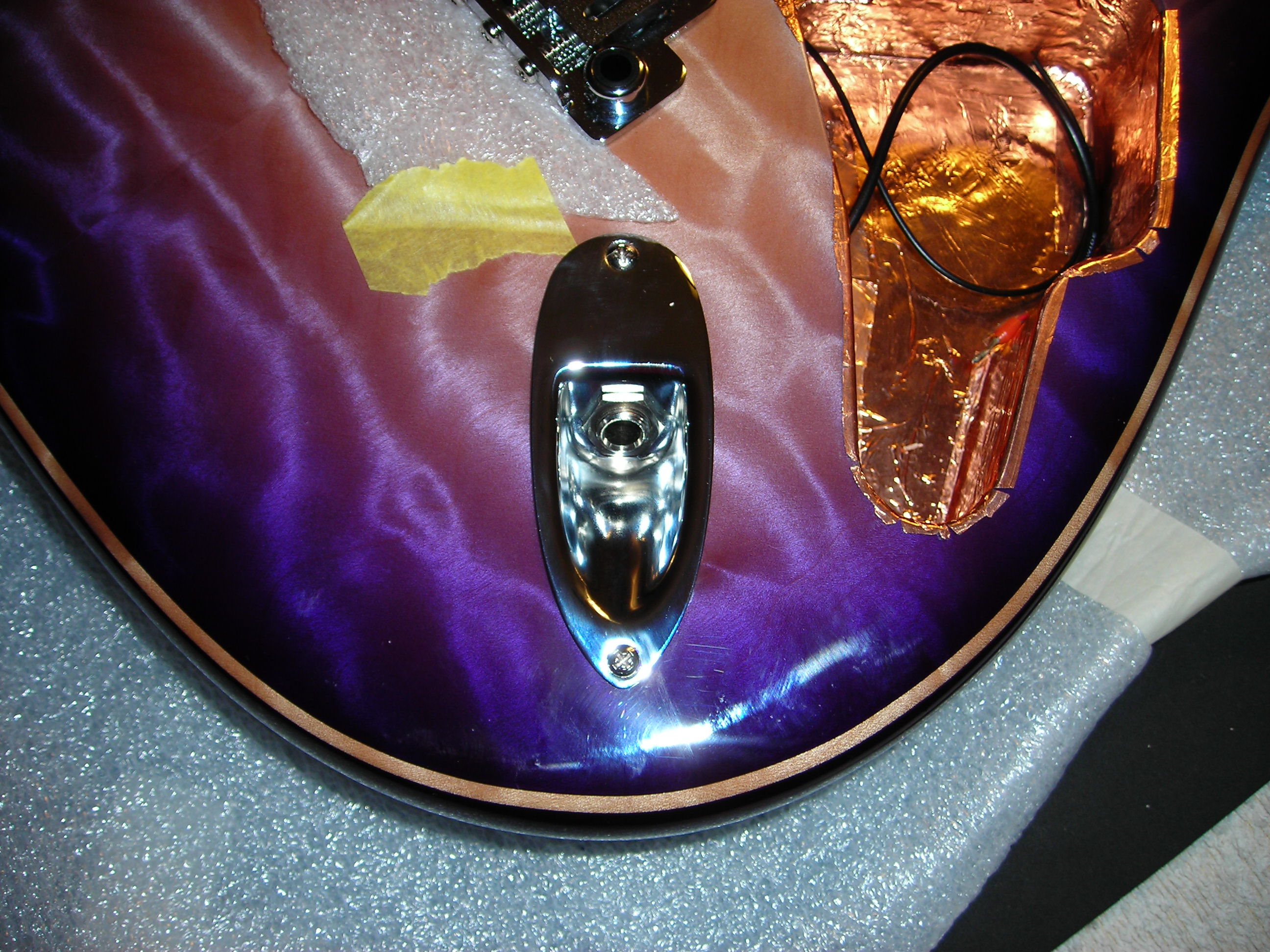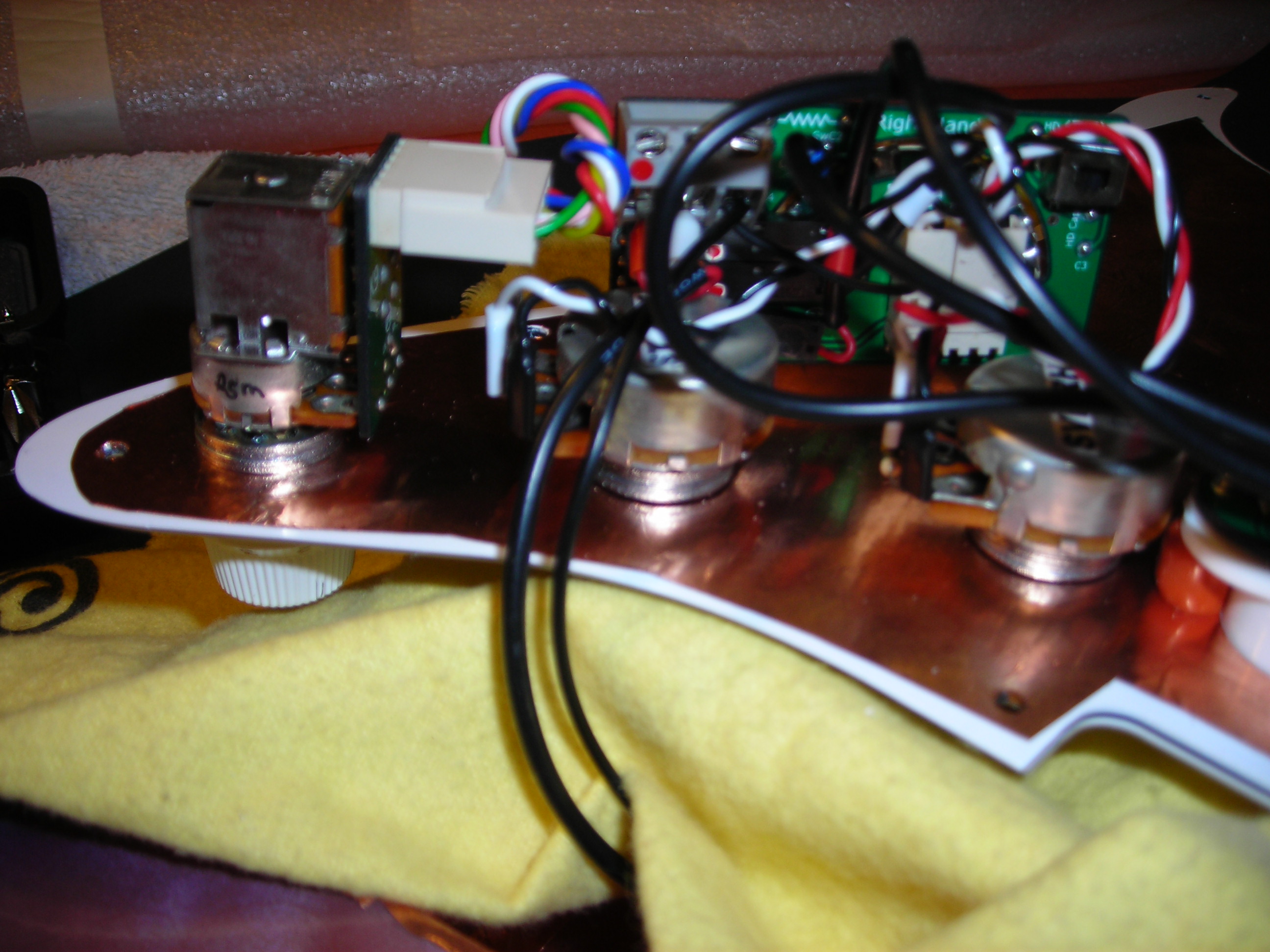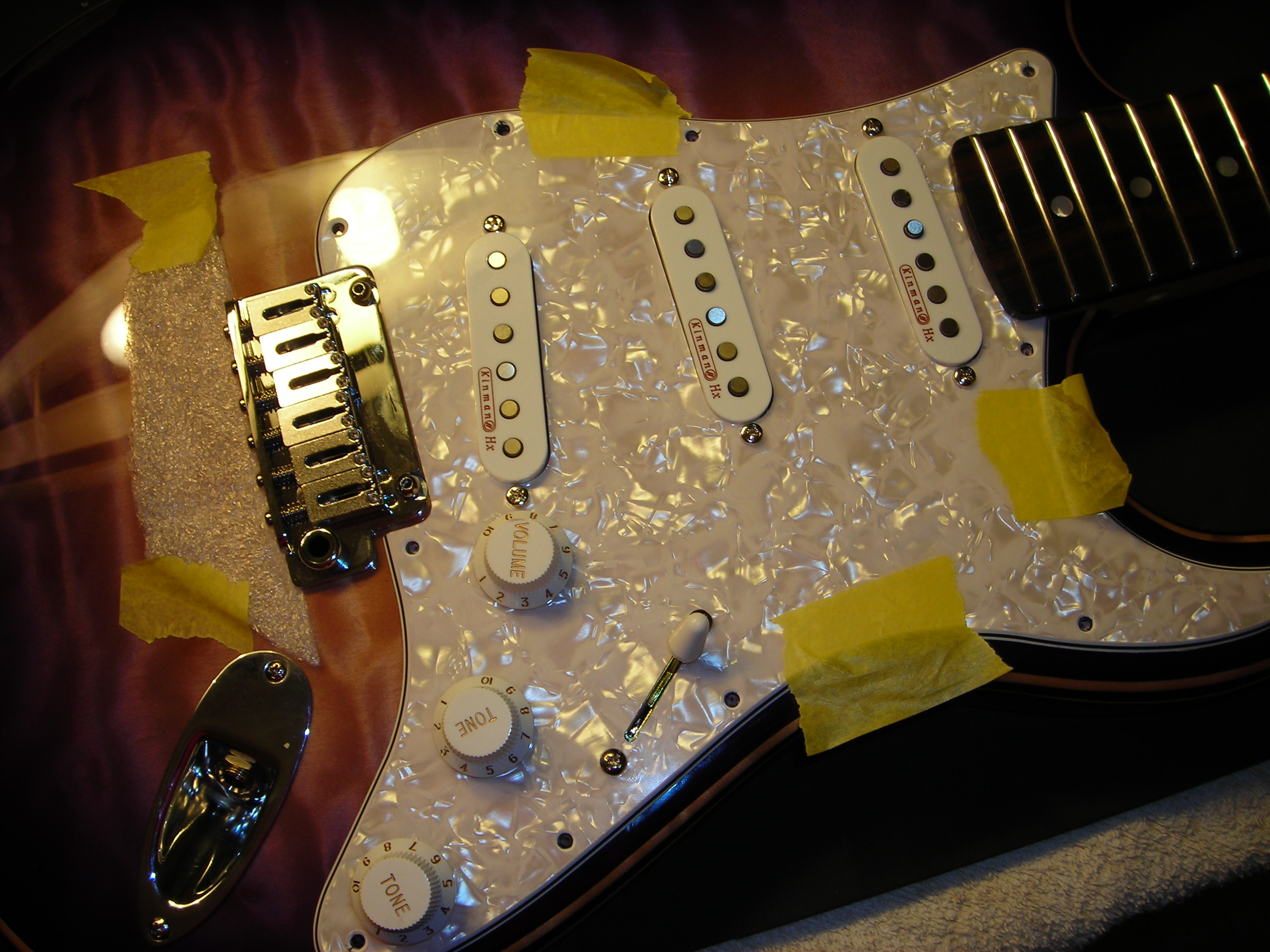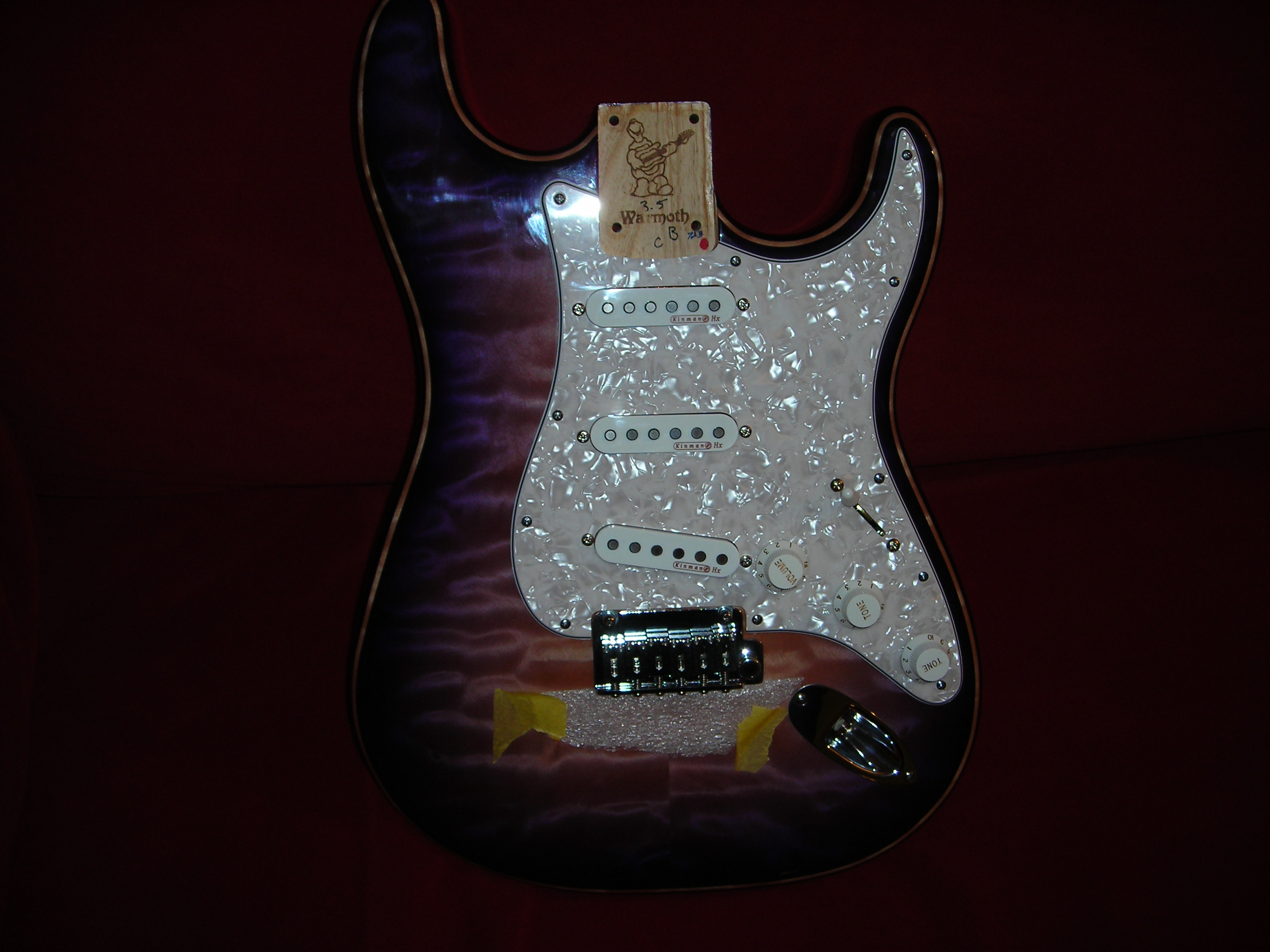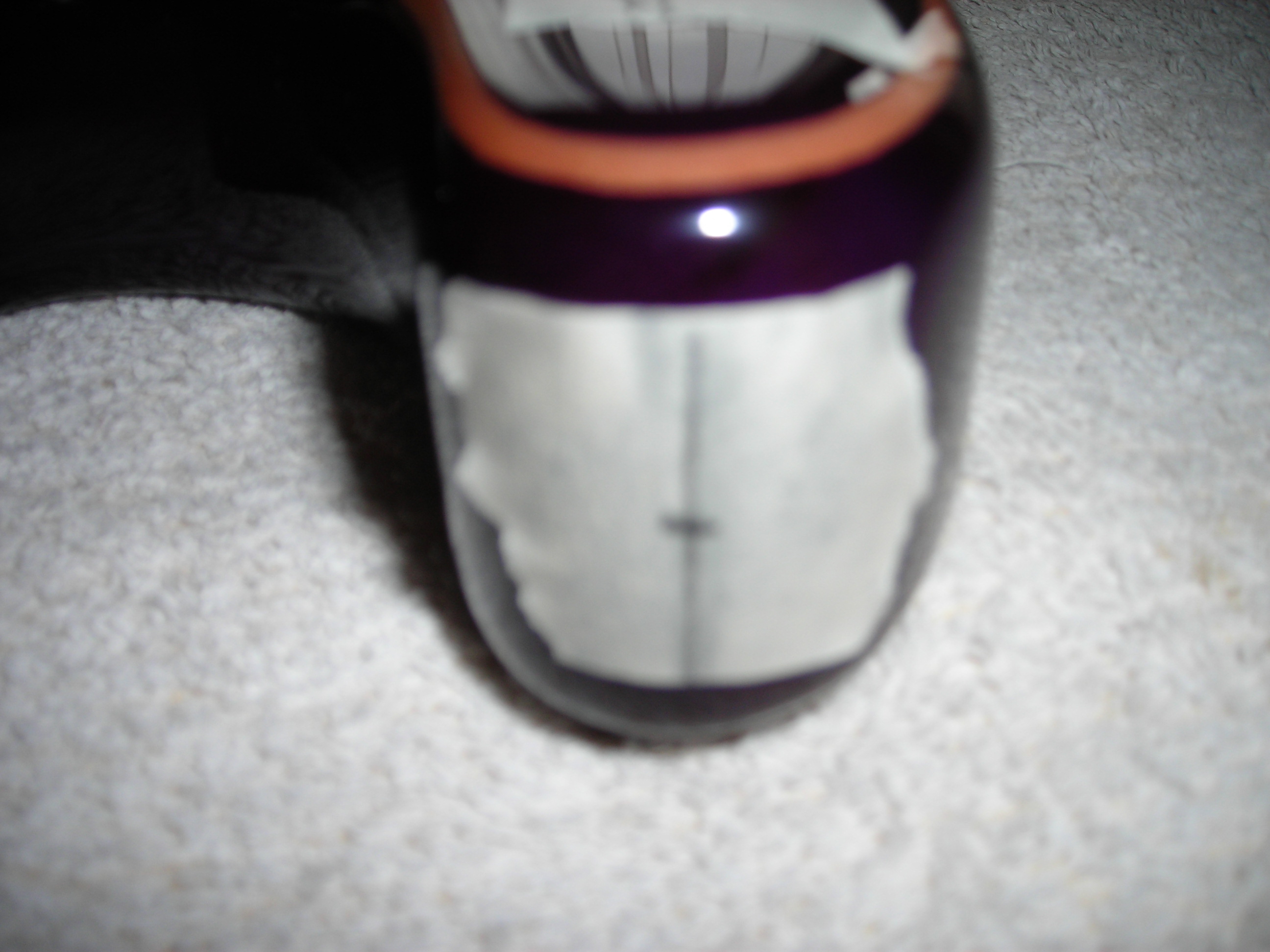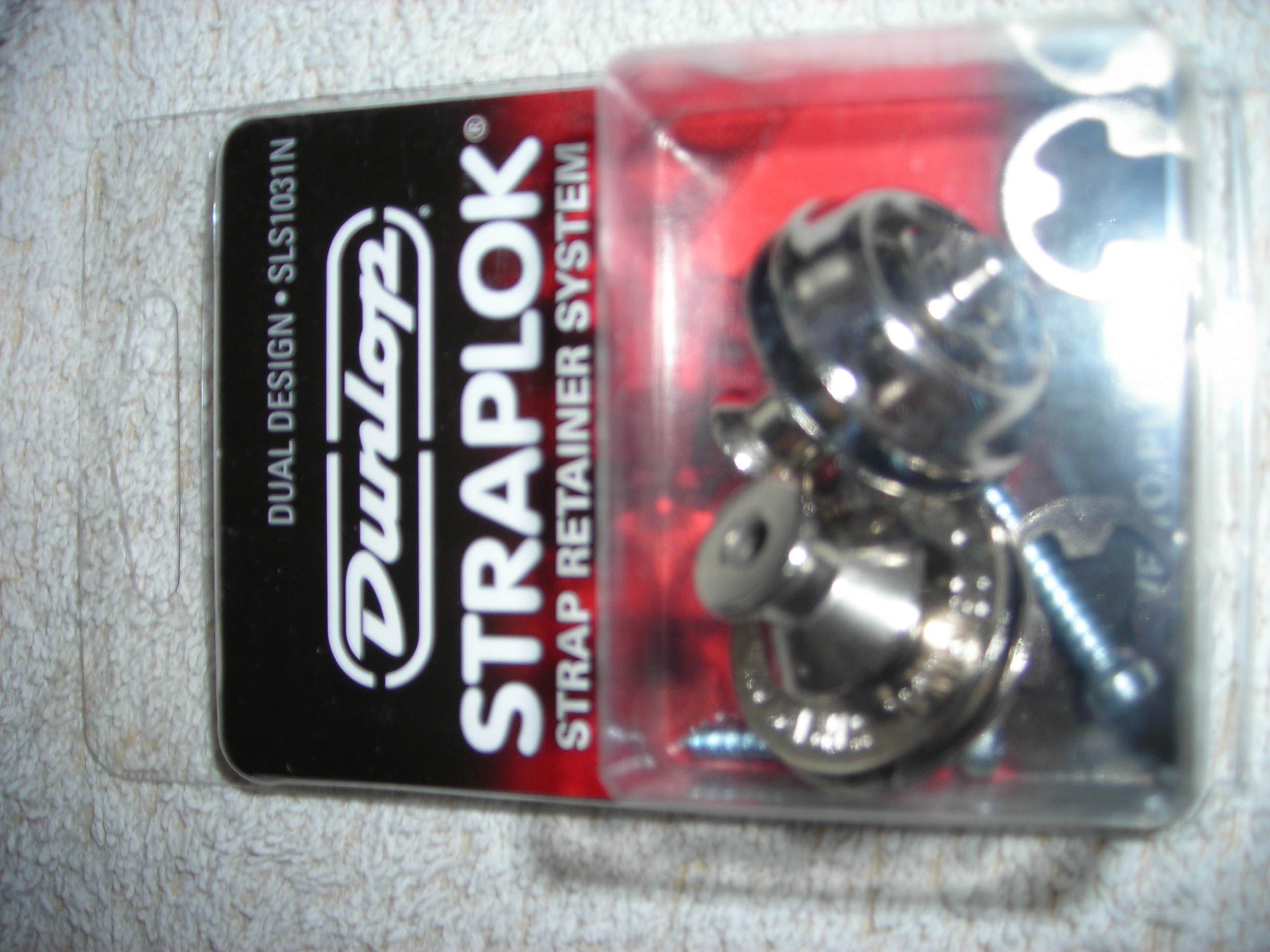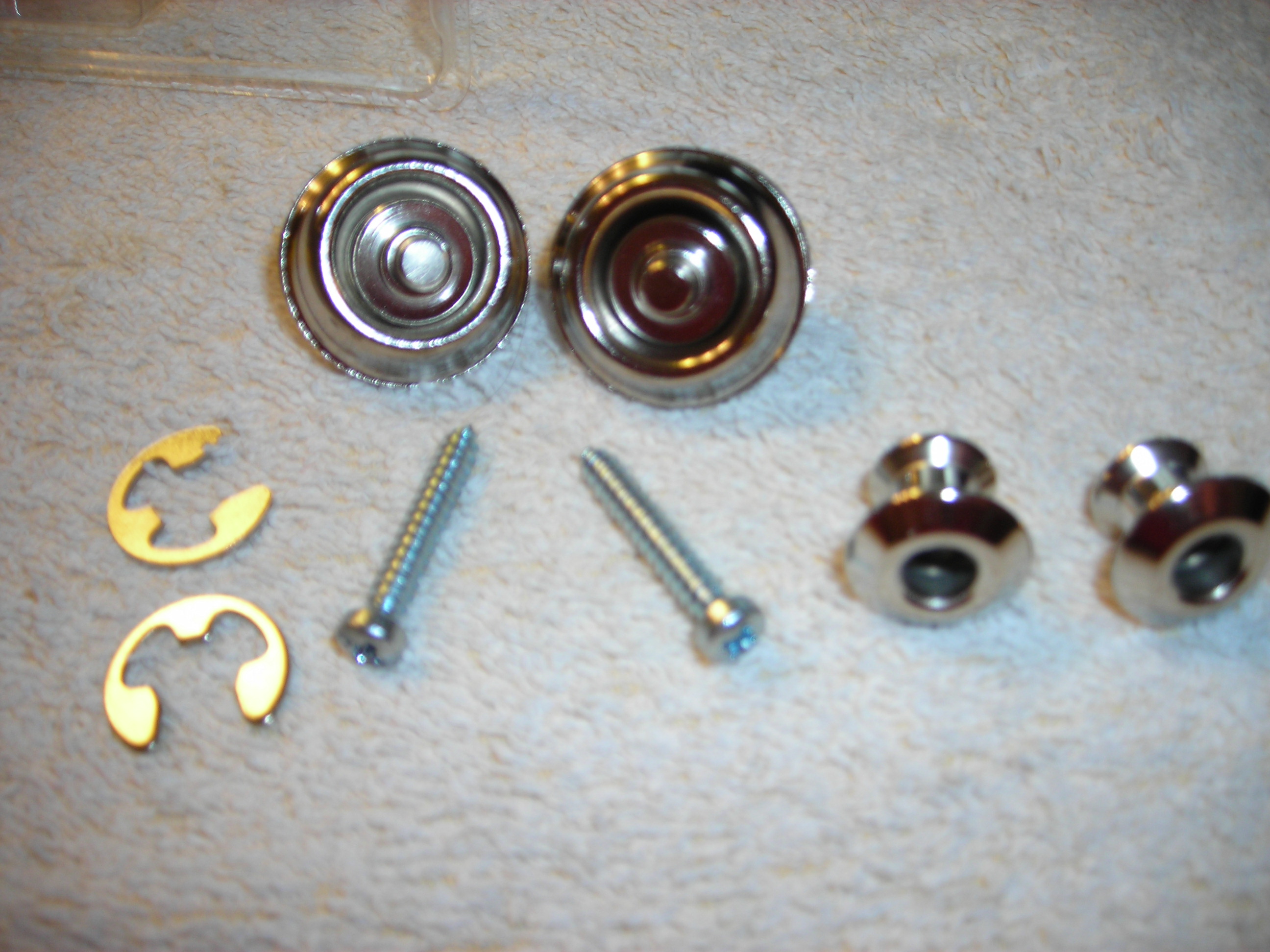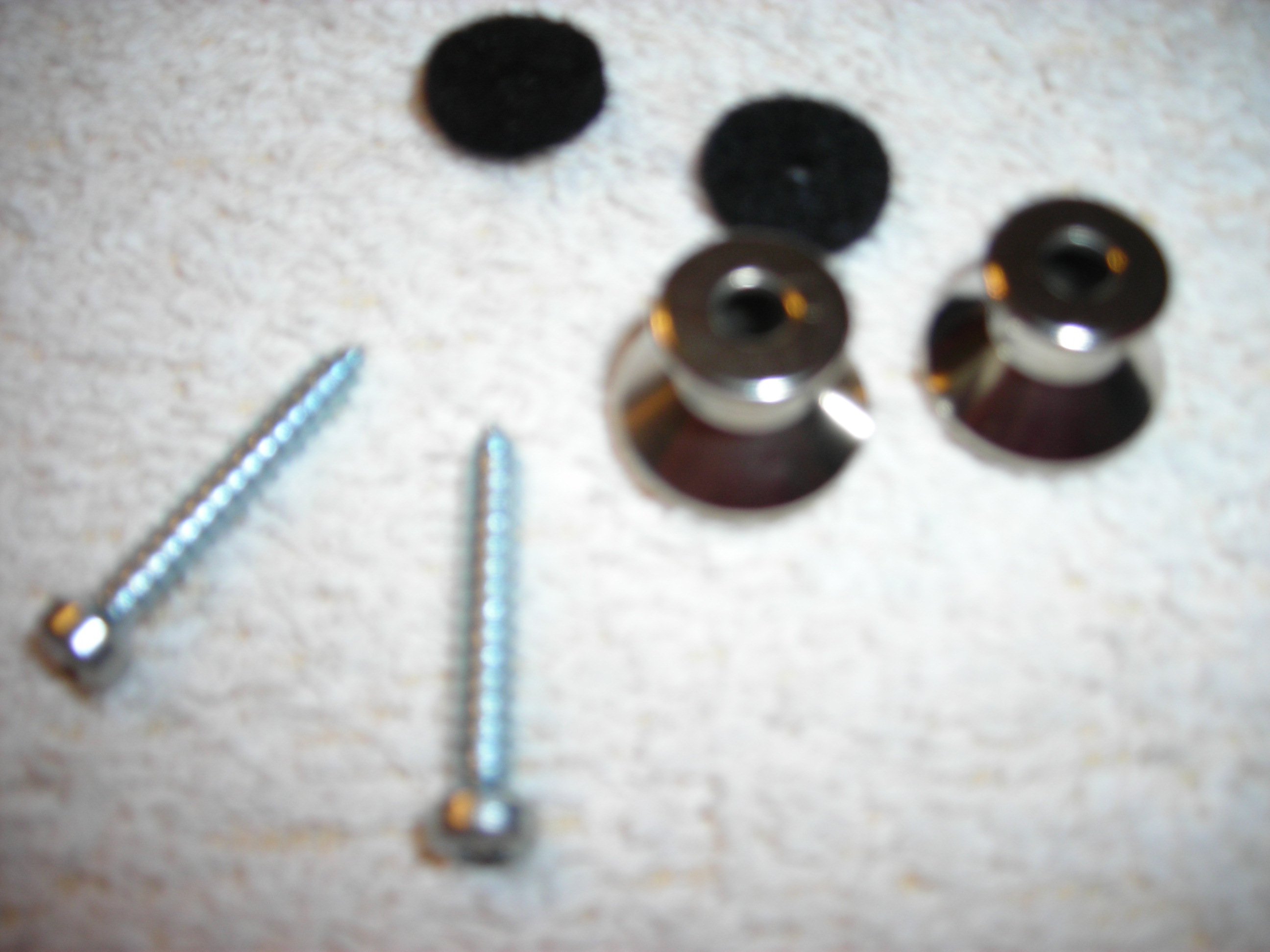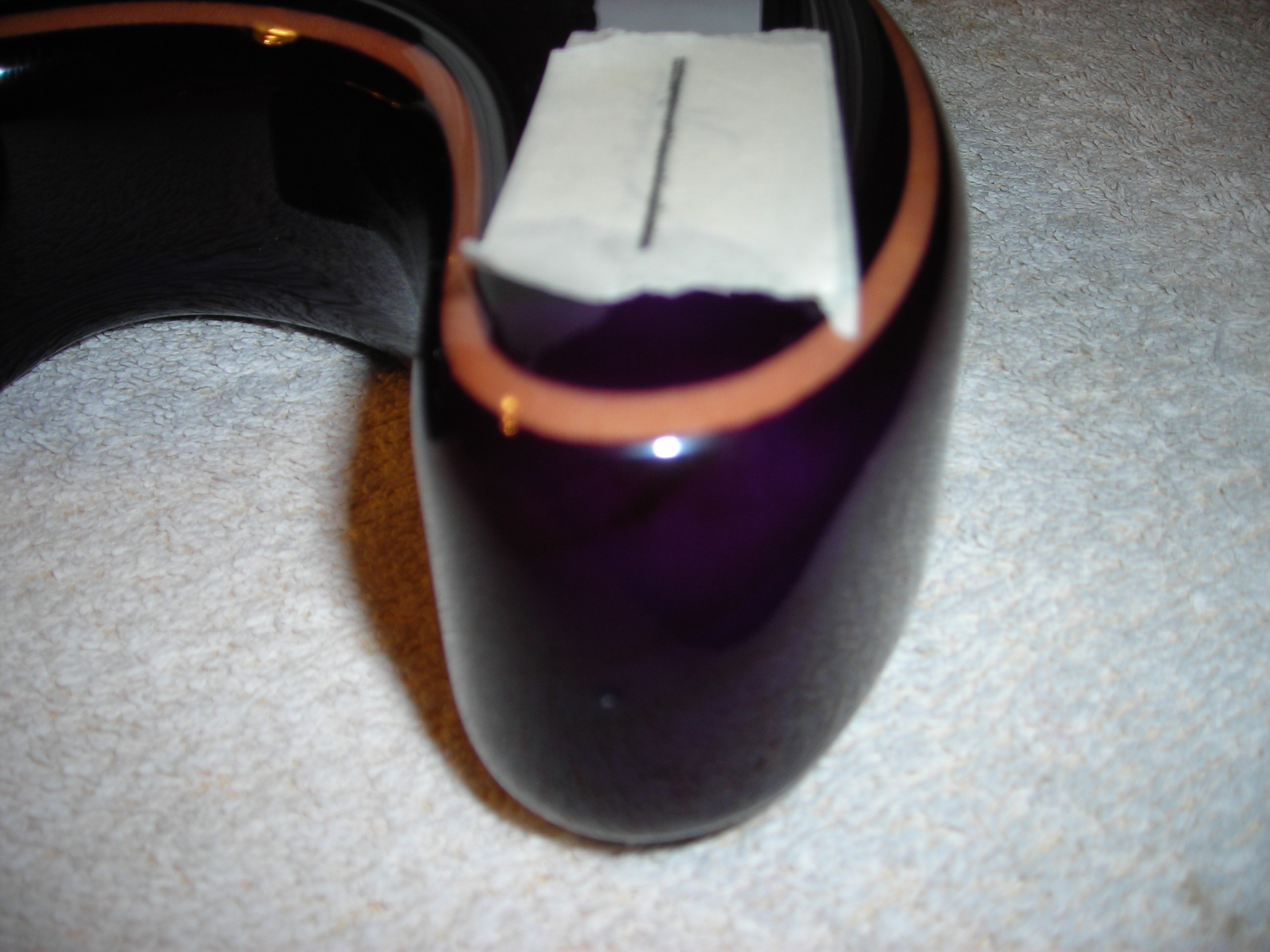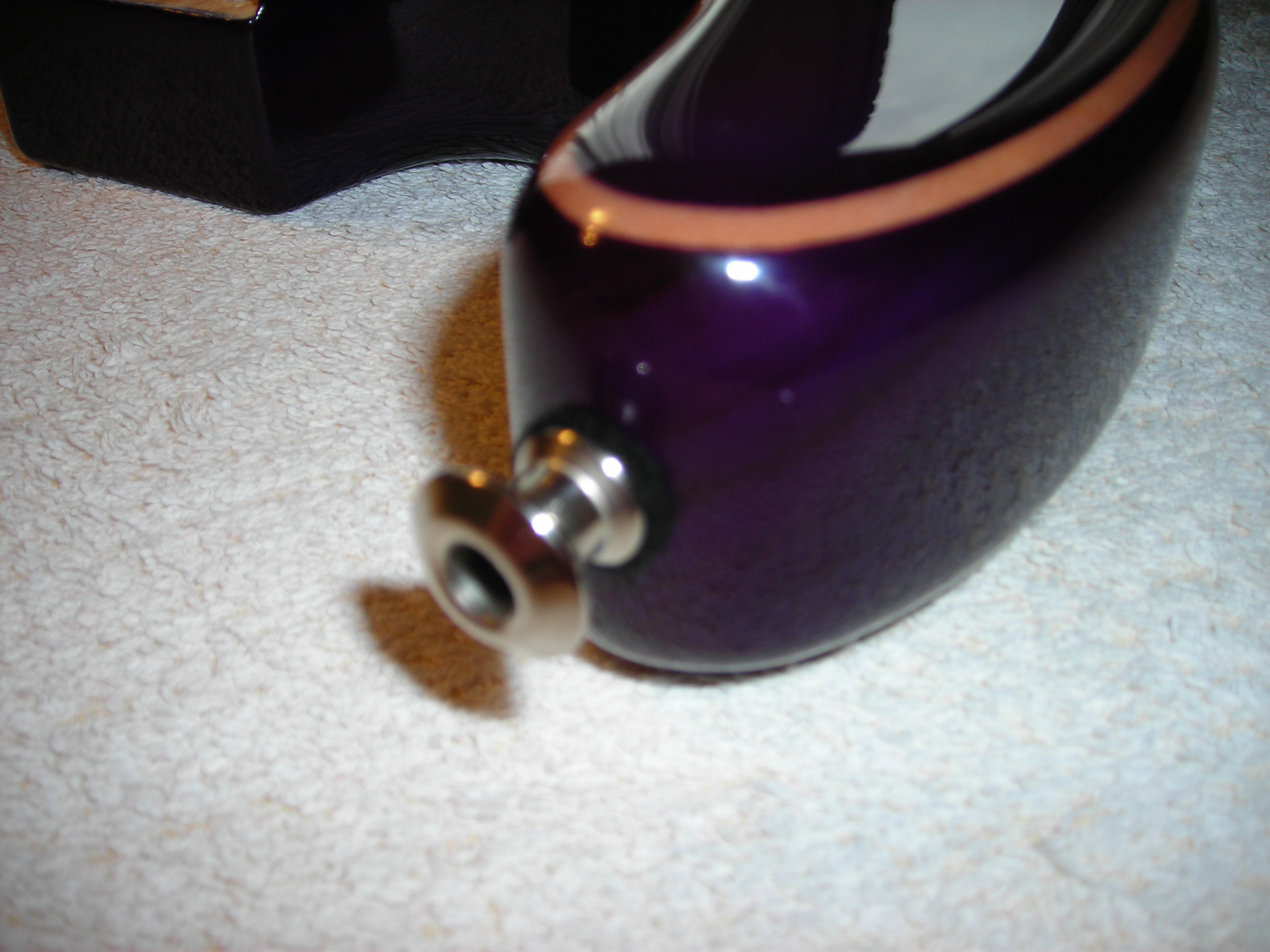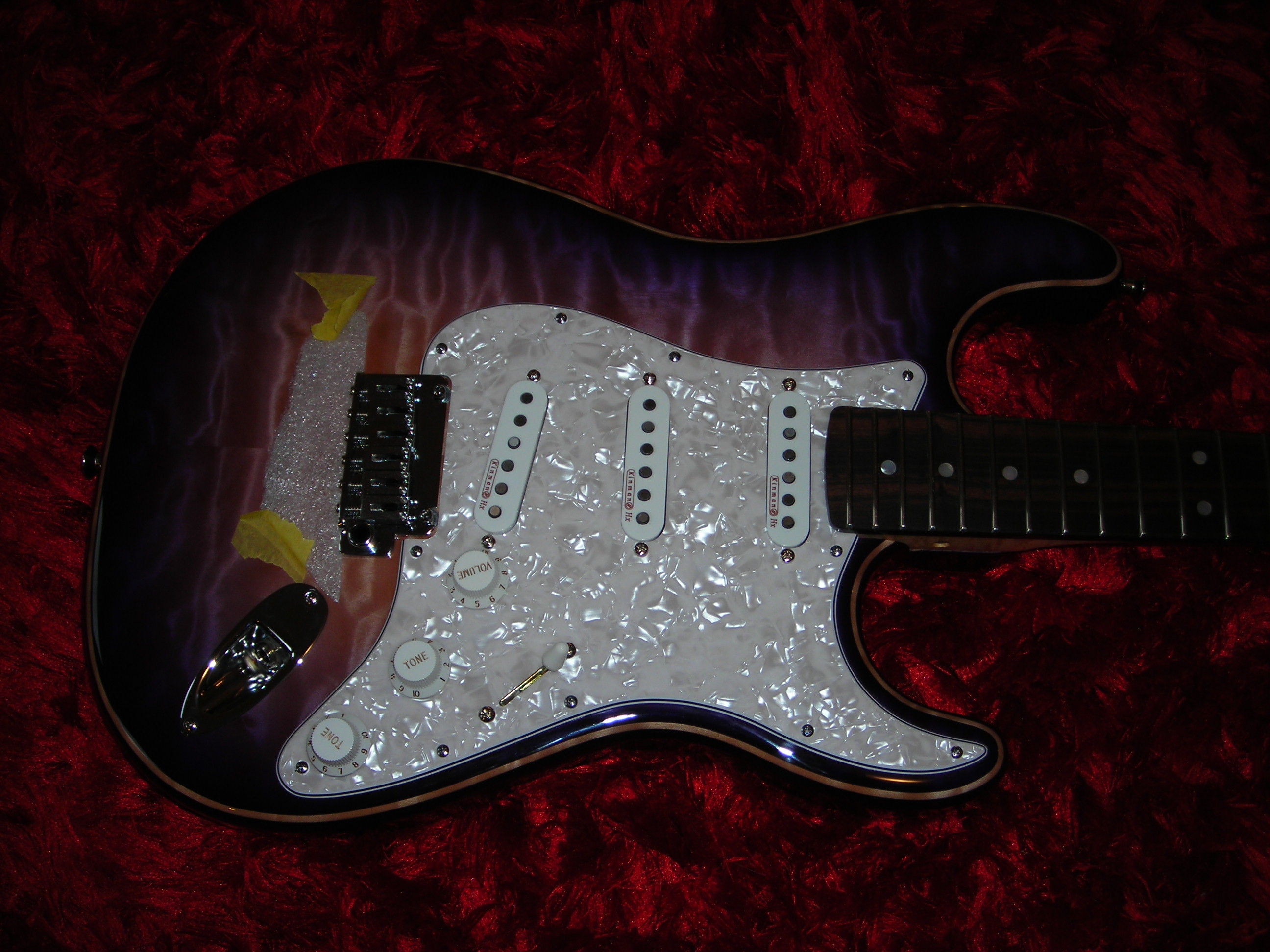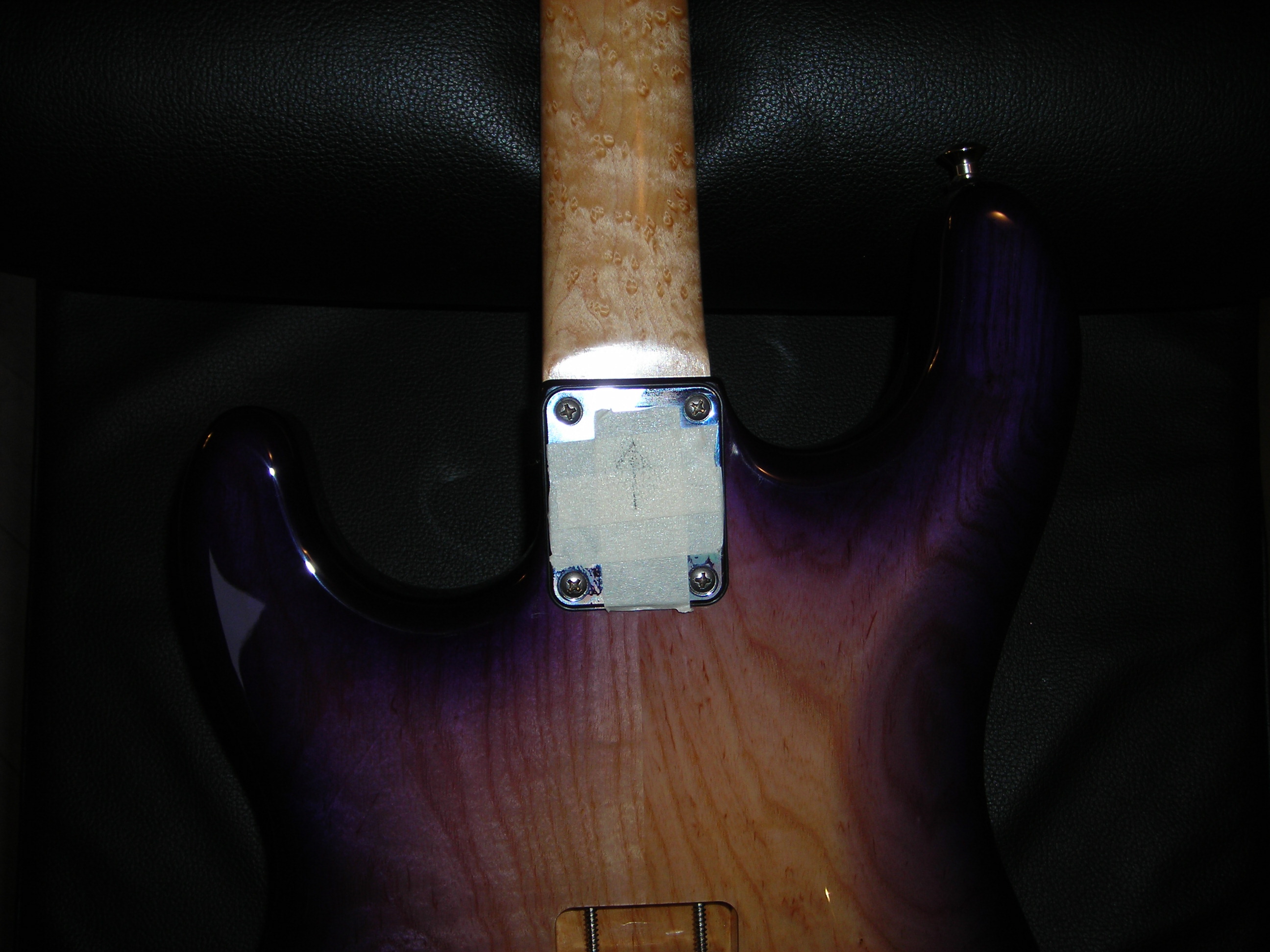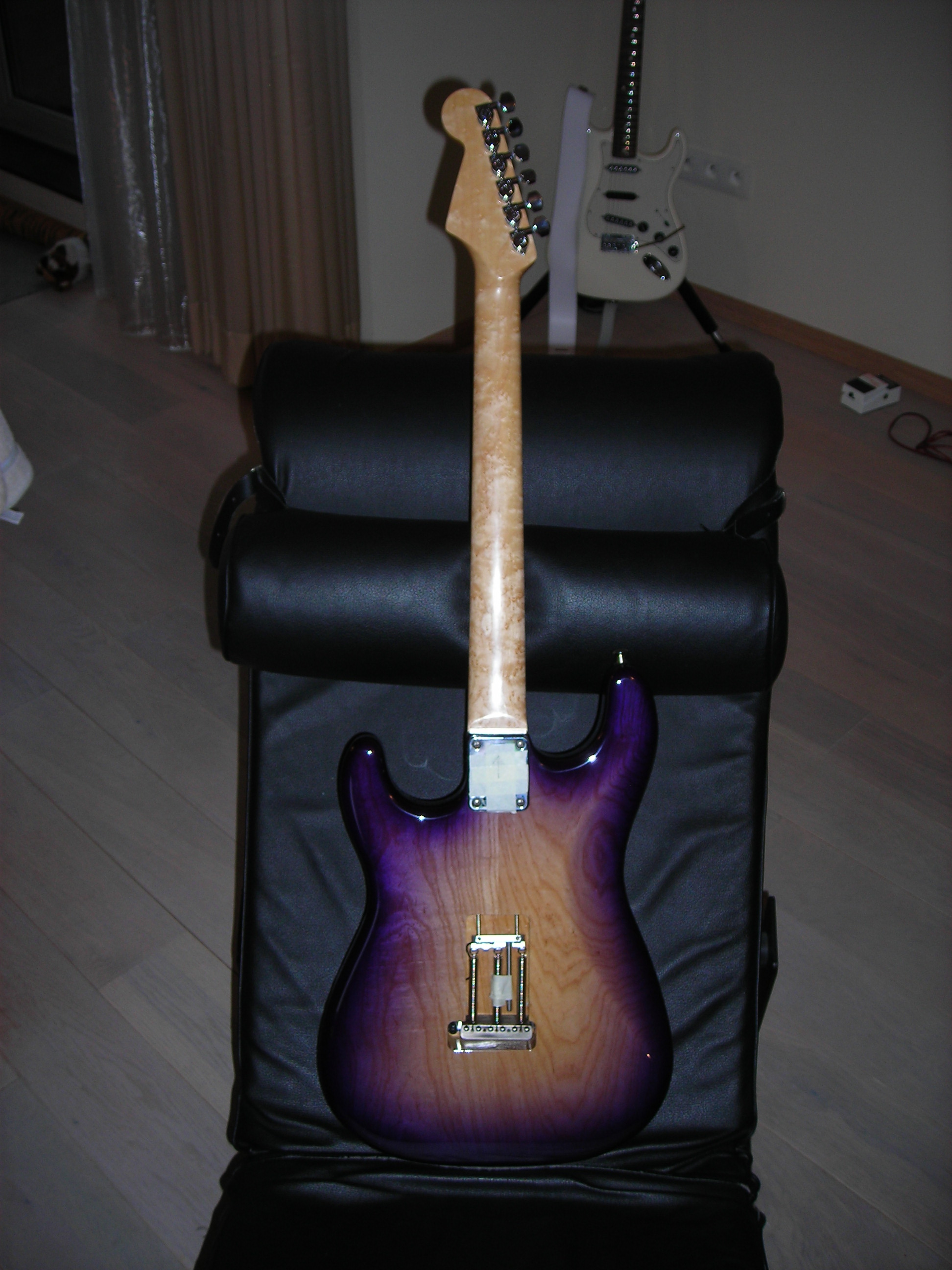I missed the early excitement but I want to add one point for those interested in this as a model or guideline - understanding why you're doing the things to the frets that you're doing, makes it almost impossible to blow it. The double inking - after the first inking, a run of a very flat abrasive over all the frets removes the ink from all the high spots - what's left is the low spots, which all the rest of the frets must be matched to. But the ink tells you exactly what to do, only OVER-working can be dangerous.
And the second inking is for the crowning, and it's almost opposite - you want to remove material up the sides to leave a thin, even line of ink on the top (and re-inking is no sin if it's needed). Or if you use the modern curved-channel crowning files, just being consistent is the key to a fine job. When you understand it and work as methodically (not too strato-maniacal!) as this, the process keeps you from screwing up. Which is kind of neat, and a great relief. I have found with Warmoth & USACG necks that checking for high spots, maybe a bit of work on those, and doing the ends is usually all I want to do for a while - I'd just as soon let the neck settle for a year if I can get away with it (this is more relevant to the single-truss rod "vintage" type, Warmoth's moderns are pretty much bulletproof).
But tThis gent's about as methodically-careful as any first-timer I've ever seen, and I would be most surprised if he didn't come out with a mighty fine twanker here.
And the second inking is for the crowning, and it's almost opposite - you want to remove material up the sides to leave a thin, even line of ink on the top (and re-inking is no sin if it's needed). Or if you use the modern curved-channel crowning files, just being consistent is the key to a fine job. When you understand it and work as methodically (not too strato-maniacal!) as this, the process keeps you from screwing up. Which is kind of neat, and a great relief. I have found with Warmoth & USACG necks that checking for high spots, maybe a bit of work on those, and doing the ends is usually all I want to do for a while - I'd just as soon let the neck settle for a year if I can get away with it (this is more relevant to the single-truss rod "vintage" type, Warmoth's moderns are pretty much bulletproof).
But tThis gent's about as methodically-careful as any first-timer I've ever seen, and I would be most surprised if he didn't come out with a mighty fine twanker here.



